History
Origins
Although no surviving historical records deal directly with the founding of Venice, tradition and the available evidence have led several historians to agree that the original population of Venice consisted of refugees—from nearby Roman cities such as
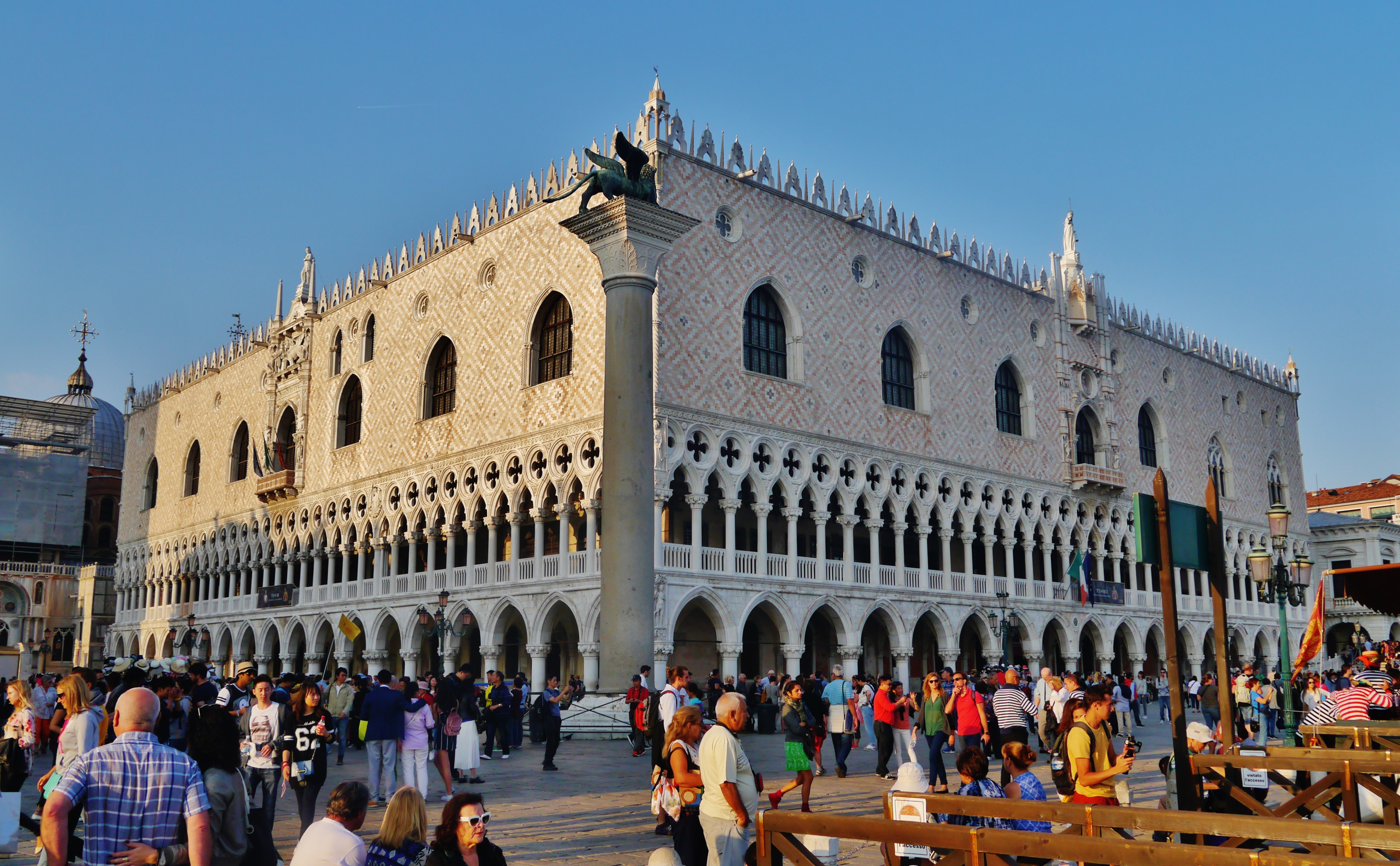 The traditional first
The traditional first Expansion
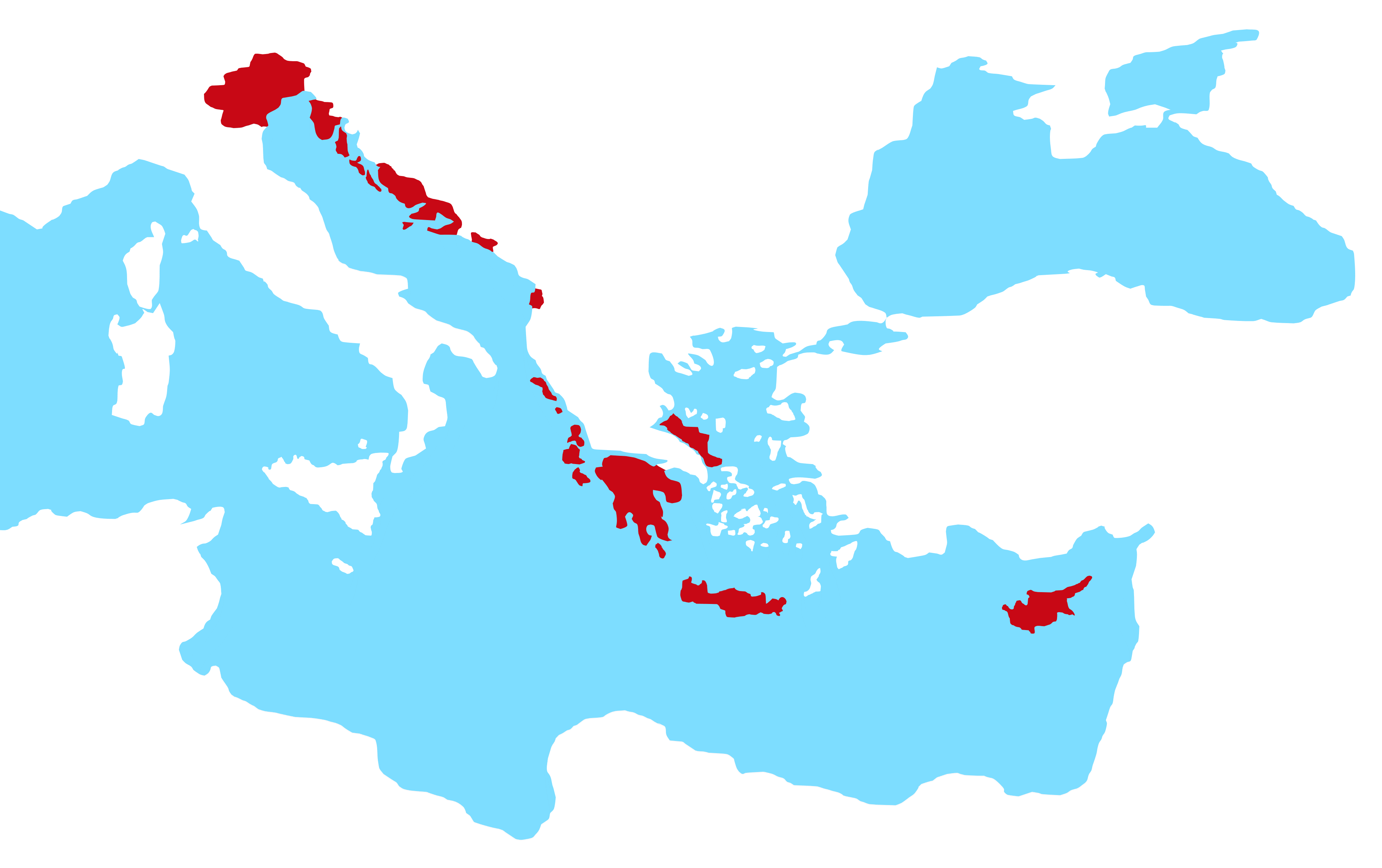 From the 9th to the 12th centuries, Venice developed into a powerful maritime empire (an Italian thalassocracy known also as ''Maritime republics, repubblica marinara''), in addition to Venice there were seven others: the most important ones were Republic of Genoa, Genoa, Republic of Pisa, Pisa, and Duchy of Amalfi, Amalfi; and the lesser known were Republic of Ragusa, Ragusa, Republic of Ancona, Ancona, Duchy of Gaeta, Gaeta and Republic of Noli, Noli. Its own strategic position at the head of the Adriatic made Venetian naval and commercial power almost invulnerable. With the elimination of pirates along the Dalmatia, Dalmatian coast, the city became a flourishing trade centre between Western Europe and the rest of the world, especially with the Byzantine Empire and Asia, where its navy protected sea routes against piracy.
From the 9th to the 12th centuries, Venice developed into a powerful maritime empire (an Italian thalassocracy known also as ''Maritime republics, repubblica marinara''), in addition to Venice there were seven others: the most important ones were Republic of Genoa, Genoa, Republic of Pisa, Pisa, and Duchy of Amalfi, Amalfi; and the lesser known were Republic of Ragusa, Ragusa, Republic of Ancona, Ancona, Duchy of Gaeta, Gaeta and Republic of Noli, Noli. Its own strategic position at the head of the Adriatic made Venetian naval and commercial power almost invulnerable. With the elimination of pirates along the Dalmatia, Dalmatian coast, the city became a flourishing trade centre between Western Europe and the rest of the world, especially with the Byzantine Empire and Asia, where its navy protected sea routes against piracy.
 The
The  The seizure of Constantinople proved as decisive a factor in ending the Byzantine Empire as the loss of the Anatolian Theme (Byzantine administrative unit), themes, after Battle of Manzikert, Manzikert. Although the Byzantines recovered control of the ravaged city a half-century later, the Byzantine Empire was terminally weakened, and existed as a ghost of its old self, until Sultan Mehmet The Conqueror took the city Fall of Constantinople, in 1453.
Situated on the Adriatic Sea, Venice had always traded extensively with the Byzantine Empire and the Middle East. By the late 13th century, Venice was the most prosperous city in all of Europe. At the peak of its power and wealth, it had 36,000 sailors operating 3,300 ships, dominating Mediterranean commerce. Venice's leading families vied with each other to build the grandest palaces and to support the work of the greatest and most talented artists. The city was governed by the Great Council of Venice, Great Council, which was made up of members of the noble families of Venice. The Great Council appointed all public officials, and elected a Senate of 200 to 300 individuals. Since this group was too large for efficient administration, a Council of Ten (also called the Ducal Council, or the Signoria), controlled much of the administration of the city. One member of the great council was elected "doges of Venice, doge", or duke, to be the chief executive; he would usually hold the title until his death, although several Doges were forced, by pressure from their oligarchy, oligarchical peers, to resign and retire into monastery, monastic seclusion, when they were felt to have been discredited by political failure.
The seizure of Constantinople proved as decisive a factor in ending the Byzantine Empire as the loss of the Anatolian Theme (Byzantine administrative unit), themes, after Battle of Manzikert, Manzikert. Although the Byzantines recovered control of the ravaged city a half-century later, the Byzantine Empire was terminally weakened, and existed as a ghost of its old self, until Sultan Mehmet The Conqueror took the city Fall of Constantinople, in 1453.
Situated on the Adriatic Sea, Venice had always traded extensively with the Byzantine Empire and the Middle East. By the late 13th century, Venice was the most prosperous city in all of Europe. At the peak of its power and wealth, it had 36,000 sailors operating 3,300 ships, dominating Mediterranean commerce. Venice's leading families vied with each other to build the grandest palaces and to support the work of the greatest and most talented artists. The city was governed by the Great Council of Venice, Great Council, which was made up of members of the noble families of Venice. The Great Council appointed all public officials, and elected a Senate of 200 to 300 individuals. Since this group was too large for efficient administration, a Council of Ten (also called the Ducal Council, or the Signoria), controlled much of the administration of the city. One member of the great council was elected "doges of Venice, doge", or duke, to be the chief executive; he would usually hold the title until his death, although several Doges were forced, by pressure from their oligarchy, oligarchical peers, to resign and retire into monastery, monastic seclusion, when they were felt to have been discredited by political failure.
 The Venetian governmental structure was similar in some ways to the republican system of ancient Rome, with an elected chief executive (the doge), a senator-like assembly of nobles, and the general citizenry with limited political power, who originally had the power to grant or withhold their approval of each newly elected doge. Church and various private property was tied to military service, although there was no knight tenure within the city itself. The ''Cavalieri di San Marco'' was the only order of chivalry ever instituted in Venice, and no citizen could accept or join a foreign order without the government's consent. Venice remained a republic throughout its independent period, and politics and the military were kept separate, except when on occasion the Doge personally headed the military. War was regarded as a continuation of commerce by other means. Therefore, the city's early employment of large numbers of mercenaries for service elsewhere, and later its reliance on foreign mercenaries when the ruling class was preoccupied with commerce.
The Venetian governmental structure was similar in some ways to the republican system of ancient Rome, with an elected chief executive (the doge), a senator-like assembly of nobles, and the general citizenry with limited political power, who originally had the power to grant or withhold their approval of each newly elected doge. Church and various private property was tied to military service, although there was no knight tenure within the city itself. The ''Cavalieri di San Marco'' was the only order of chivalry ever instituted in Venice, and no citizen could accept or join a foreign order without the government's consent. Venice remained a republic throughout its independent period, and politics and the military were kept separate, except when on occasion the Doge personally headed the military. War was regarded as a continuation of commerce by other means. Therefore, the city's early employment of large numbers of mercenaries for service elsewhere, and later its reliance on foreign mercenaries when the ruling class was preoccupied with commerce.

Decline
Venice's long decline started in the 15th century. Venice confronted the Ottoman Empire in the Siege of Thessalonica (1422–1430) and sent ships to help defendModern age
The Republic of Venice lost its independence when Napoleon Bonaparte conquered Venice on 12 May 1797 during the War of the First Coalition. Napoleon was seen as something of a liberator by the city's Jewish population. He removed the gates of the Venetian Ghetto, Ghetto and ended the restrictions on when and where Jews could live and travel in the city. Venice became Austrian territory when Napoleon signed the Treaty of Campo Formio on 12 October 1797. The Austrians took control of the city on 18 January 1798. Venice was taken from Austria by the Treaty of Pressburg (1805), Treaty of Pressburg in 1805 and became part of Napoleon's Kingdom of Italy (Napoleonic), Kingdom of Italy. It was returned to Austria following Napoleon's defeat in 1814, when it became part of the Austrian-held Kingdom of Lombardy–Venetia. In 1848 a revolt briefly re-established the Repubblica di San Marco, Venetian republic under Daniele Manin, but this was crushed in 1849. In 1866, after the Third Italian War of Independence, Venice, along with the rest of the Veneto, became part of the newly created unification of Italy, Kingdom of Italy. From the middle of the 18th century, Trieste and papal Ancona, both of which became free ports, competed with Venice more and more economically. Habsburg Trieste in particular boomed and increasingly served trade via the Suez Canal, which opened in 1869, between Asia and Central Europe, while Venice very quickly lost its competitive edge and commercial strength. During the World War II, Second World War, the historic city was largely free from attack, the only aggressive effort of note being Operation Bowler, a successful Royal Air Force precision strike on the German naval operations in the city in March 1945. The targets were destroyed with virtually no architectural damage inflicted on the city itself. However, the industrial areas in Mestre and Marghera and the railway lines to Padua, Trieste, and Trento were Oil Campaign chronology of World War II, repeatedly bombed. On 29 April 1945, a force of British military, British and 2nd New Zealand Division, New Zealand troops of the Eighth Army (United Kingdom), British Eighth Army, under Lieutenant General Bernard Freyberg, Freyberg, liberated Venice, which had been a hotbed of anti-Mussolini Italian partisan activity.Geography

 Venice sits atop alluvial silt washed into the sea by the rivers flowing eastward from the alps across the
Venice sits atop alluvial silt washed into the sea by the rivers flowing eastward from the alps across the Subsidence
Building foundations
Those fleeing barbarian invasions who found refuge on the sandy islands of Torcello, Iesolo, and Malamocco, in this coastal lagoon, learned to build by driving closely spaced Deep foundation, piles consisting of the trunks of alder trees, a wood noted for its water resistance, into the mud and sand, until they reached a much harder layer of compressed clay. Building foundations rested on plates of Istrian stone, Istrian limestone placed on top of the piles.Flooding
Between autumn and early spring, the city is often threatened by flood tides pushing in from the Adriatic. Six hundred years ago, Venetians protected themselves from land-based attacks by diverting all the major rivers flowing into the lagoon and thus preventing sediment from filling the area around the city. This created an ever-deeper lagoon environment. Additionally, the lowest part of Venice, St Mark's Basilica, St. Mark's Basilica, is only above sea level, and one of the most flood-prone parts of the city. In 1604, to defray the cost of flood relief, Venice introduced what could be considered the first example of a "stamp tax". When the revenue fell short of expectations in 1608, Venice introduced paper, with the superscription "AQ" and imprinted instructions, which was to be used for "letters to officials". At first, this was to be a temporary tax, but it remained in effect until the fall of the Republic in 1797. Shortly after the introduction of the tax, Spain produced similar paper for general taxation purposes, and the practice spread to other countries. During the 20th century, when many artesian aquifer, artesian wells were sunk into the periphery of the lagoon to draw water for local industry, Venice began to subsidence, subside. It was realized that extraction of water from the aquifer was the cause. The sinking has slowed markedly since artesian wells were banned in the 1960s. However, the city is still threatened by more frequent low-level floods—the ''Acqua alta'', that rise to a height of several centimetres over its quays—regularly following certain tides. In many old houses, staircases once used to unload goods are now flooded, rendering the former ground floor uninhabitable. Studies indicate that the city continues sinking at a relatively slow rate of 1–2mm per annum; therefore, the state of alert has not been revoked. In May 2003, Italian Prime Minister Silvio Berlusconi inaugurated the MOSE Project (''Modulo Sperimentale Elettromeccanico''), an experimental model for evaluating the performance of hollow floatable gates, expected to be completed in late 2023; the idea is to fix a series of 78 hollow pontoon (boat), pontoons to the sea bed across the three entrances to the lagoon. When tides are predicted to rise above 110 cm, the pontoons will be filled with air, causing them to float and block the incoming water from the Adriatic Sea. This engineering work was due to be completed by 2018. A Reuters report stated that the MOSE Project attributed the delay to "corruption scandals". The project is not guaranteed to be successful and the cost has been very high, with as much as approximately €2 billion of the cost lost to corruption. According to a spokesman for the Fondo Ambiente Italiano, FAI:Mose is a pharaonic project that should have cost €800m [£675m] but will cost at least €7bn [£6bn]. If the barriers are closed at only 90 cm of high water, most of St Mark's will be flooded anyway; but if closed at very high levels only, then people will wonder at the logic of spending such sums on something that didn't solve the problem. And pressure will come from the cruise ships to keep the gates open.On 13 November 2019, Venice was flooded when waters peaked at , the highest tide since 1966 (1.94 m). More than 80% of the city was covered by water, which damaged cultural heritage sites, including more than 50 churches, leading to tourists cancelling their visits. The planned flood barrier would have prevented this incident according to various sources, including Marco Piana, the head of conservation at St Mark's Basilica. The mayor promised that work on the flood barrier would continue, and the Prime Minister announced that the government would be accelerating the project. The city's mayor, Luigi Brugnaro, blamed the floods on Global warming, climate change. The Palazzo Ferro Fini, chambers of the Regional Council of Veneto began to be flooded around 10 pm, two minutes after the council rejected a plan to combat global warming. One of the effects of climate change is sea level rise which causes an increase in frequency and magnitude of floodings in the city. A ''Washington Post'' report provided a more thorough analysis:
"The sea level has been rising even more rapidly in Venice than in other parts of the world. At the same time, the city is sinking, the result of tectonic plates shifting below the Italian coast. Those factors together, along with the more frequent extreme weather events associated with climate change, contribute to floods."Henk Ovink, an expert on flooding, told CNN that, while environmental factors are part of the problem, "historic floods in Venice are not only a result of the climate crisis but poor infrastructure and mismanagement". The government of Italy committed to providing 20 million euros in funding to help the city repair the most urgent aspects although Brugnaro's estimate of the total damage was "hundreds of millions" to at least 1 billion euros. On 3 October 2020, the MOSE was activated for the first time in response to a predicted high tide event, preventing some of the low-lying parts of the city (in particular the Piazza San Marco) from being flooded.
Climate
According to the Köppen climate classification, Venice has a mid-latitude, four season humid subtropical climate (''Cfa''), with cool, damp winters and warm, humid summers. The 24-hour average temperature in January is , and for July this figure is . Precipitation is spread relatively evenly throughout the year, and averages ; snow isn't a rarity between late November and early March. During the most severe winters, the canals and parts of the lagoon can freeze, but with the warming trend of the past 30–40 years, the occurrence has become rarer.Demographics
The city was one of the largest in Europe in the High Middle Ages, with a population of 60,000 in AD 1000; 80,000 in 1200; and rising up to 110,000–180,000 in 1300. In the mid-1500s the city's population was 170,000, and by 1600 it approached 200,000. In 2021, there were 254,850 people residing in the Comune of Venice (the population figure includes 50,434 in the historic city of Venice (Centro storico), 177,621 in Terraferma (the mainland); and 26,795 on other islands in the lagoon). 47.8% of the population in 2021 were male and 52.2% were female; minors (ages 18 and younger) were 14.7% of the population compared to elderly people (ages 65 and older) who numbered 27.9%. This compared with the Italian average of 16.7% and 23.5%, respectively. The average age of Venice residents was 48.6 compared to the Italian average of 45.9. In the five years between 2016 and 2021, the population of Venice declined by 2.7%, while Italy as a whole declined by 2.2%. The population in the historic old city declined much faster: from about 120,000 in 1980 to about 60,000 in 2009, and to 50,000 in 2021. , 84.2% of the population was Italian. The largest immigrant groups include: 7,814 (3.1%) Bangladeshis, 6,258 (2.5%) Romanians, 4,054 (1.6%) Moldovans, 4,014 (1.6%) Chinese people, Chinese, and 2,514 (1%) Ukrainians. Venice is predominantly Catholic Church, Roman Catholic (85.0% of the resident population in the area of the Patriarchate of Venice in 2018), but because of the long-standing relationship withGovernment
Local and regional government
Sestieri
The historic city of Venice is divided into six areas called ''sestiere, sestieri'': Each ''sestiere'' is now a statistical and historical area without any degree of autonomy. The six fingers or phalanges of the ''ferro'' on the bow of a gondola represent the six ''sestieri''. The ''sestieri'' are divided into parishes – initially 70 in 1033, but reduced underEconomy
Economic history of Venice, Venice's economy has changed throughout history. Although there is little specific information about the earliest years, it is likely that an important source of the city's prosperity was the trade in slaves, captured in central Europe and sold to North Africa and the Levant. Venice's location at the head of the Adriatic, and directly south of the terminus of the Brenner Pass over the Alps, would have given it a distinct advantage as a middleman in this important trade. In the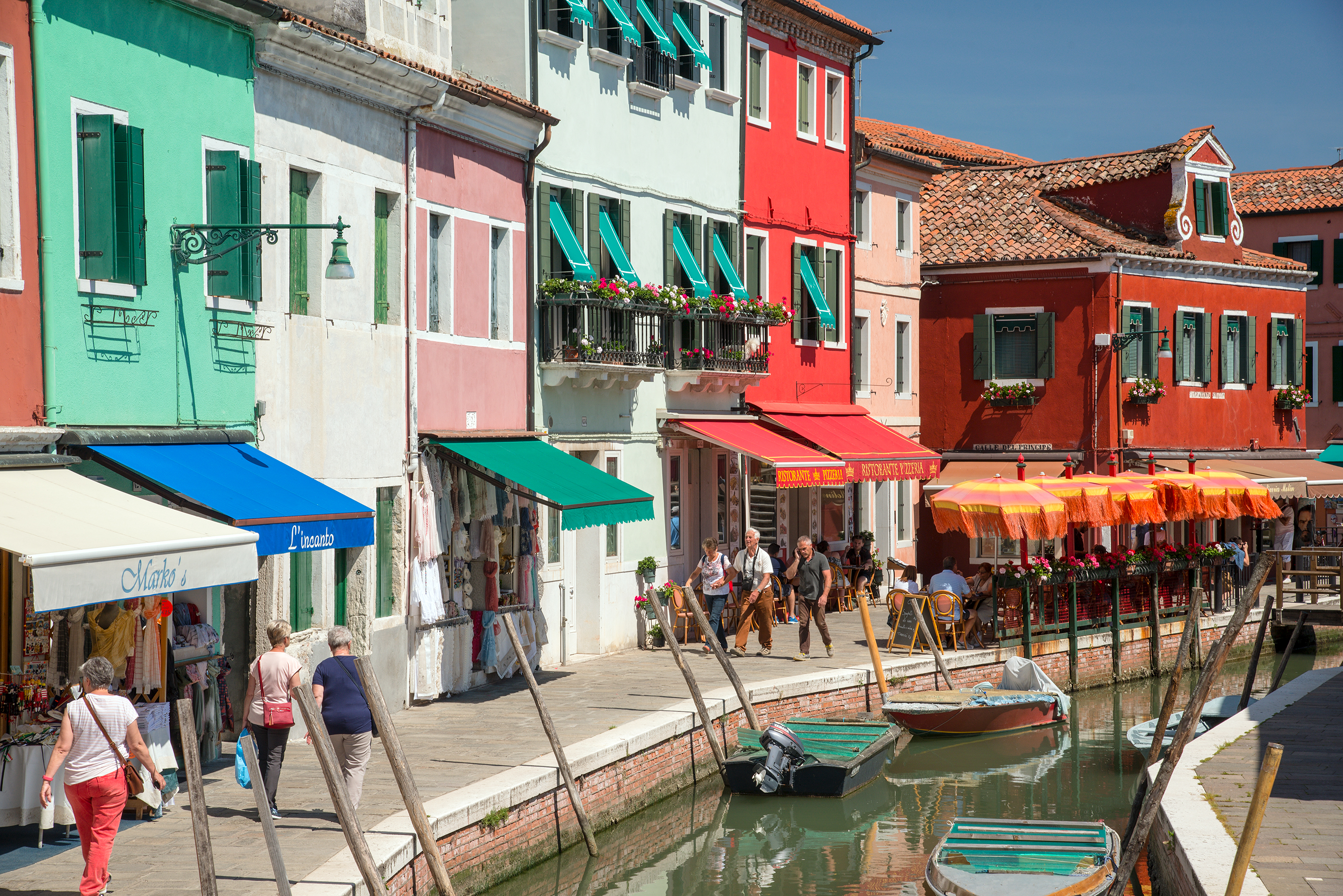

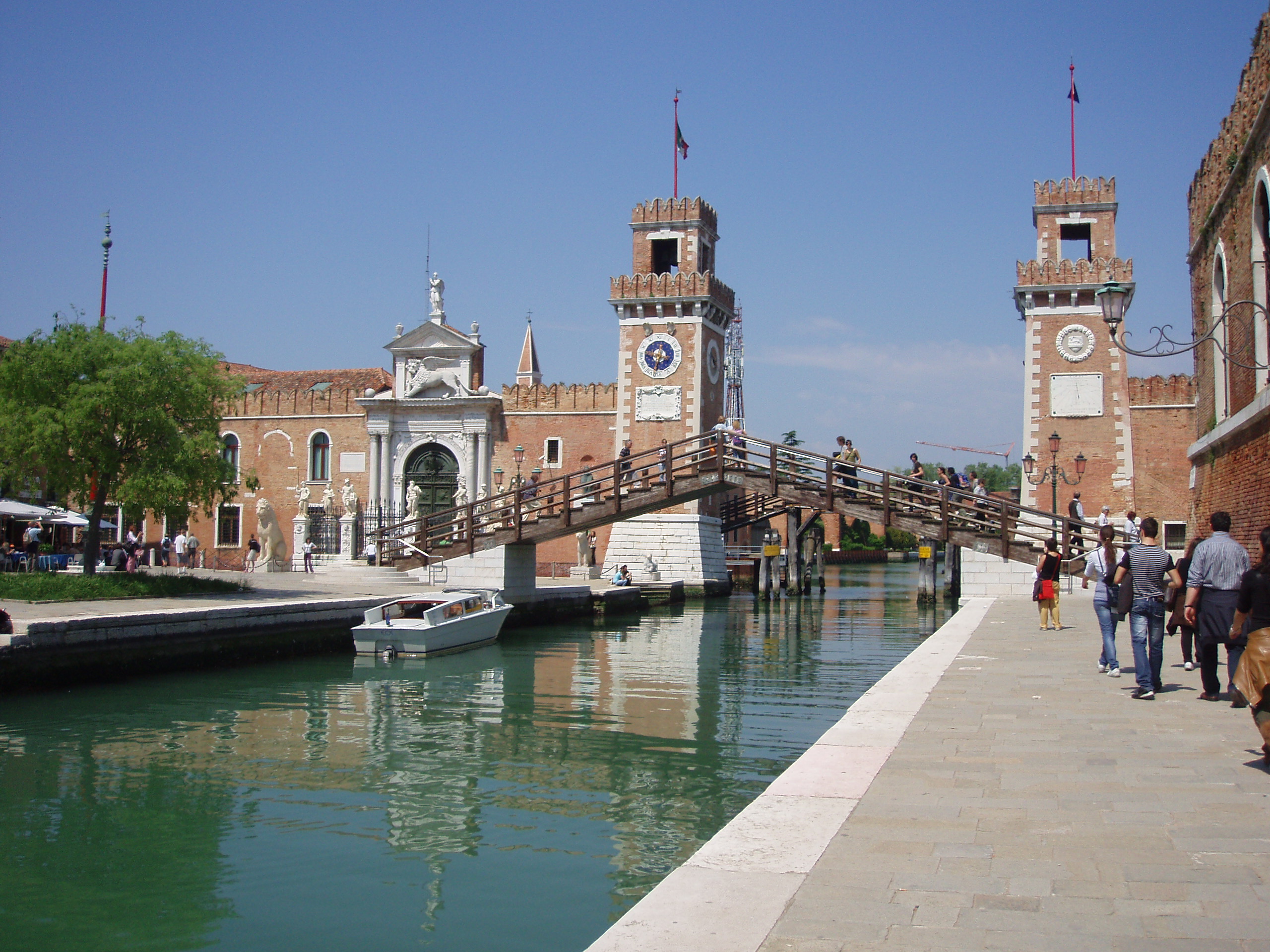 Armenian merchants from New Julfa, Julfa were the leading traders in Venice, especially the Sceriman family in the 17th century. They were specialized in the gems and diamonds business. The trade volume reached millions of tons, which was exceptional for 17th century. This all changed by the 17th century, when Venice's trade empire was taken over by countries such as Portugal, and its importance as a naval power was reduced. In the 18th century, it became a major agricultural and industrial exporter. The 18th century's biggest industrial complex was the Venice Arsenal, and the Italian Army still uses it today (even though some space has been used for major theatrical and cultural productions, and as spaces for art). Since World War II, many Venetians have moved to the neighboring cities of Mestre and Porto Marghera, seeking employment as well as affordable housing.
Today, Venice's economy is mainly based on tourism, shipbuilding (mainly in Mestre and Porto Marghera), services, trade, and industrial exports. Murano glass production in Murano and lace production in Burano are also highly important to the economy.
The city is facing financial challenges. In late 2016, it had a major deficit in its budget and debts in excess of €400 million. "In effect, the place is bankrupt", according to a report by ''The Guardian''. Many locals are leaving the historic centre due to rapidly increasing rents. The declining native population affects the character of the city, as an October 2016 National Geographic (magazine), National Geographic article pointed out in its subtitle: "Residents are abandoning the city, which is in danger of becoming an overpriced theme park". The city is also facing other challenges, including erosion, pollution, subsidence, an excessive number of tourists in peak periods, and problems caused by oversized cruise ships sailing close to the banks of the historical city.
In June 2017, Italy was required to bail out two Venetian banks—the Banca Popolare di Vicenza and Veneto Banca—to prevent their bankruptcies. Both banks would be wound down and their assets that have value taken over by another Italian bank, Intesa Sanpaolo, which would receive €5.2 billion as compensation. The Italian government would be responsible for losses from any uncollectible loans from the closed banks. The cost would be €5.2 billion, with further guarantees to cover bad loans totaling €12 billion.
Armenian merchants from New Julfa, Julfa were the leading traders in Venice, especially the Sceriman family in the 17th century. They were specialized in the gems and diamonds business. The trade volume reached millions of tons, which was exceptional for 17th century. This all changed by the 17th century, when Venice's trade empire was taken over by countries such as Portugal, and its importance as a naval power was reduced. In the 18th century, it became a major agricultural and industrial exporter. The 18th century's biggest industrial complex was the Venice Arsenal, and the Italian Army still uses it today (even though some space has been used for major theatrical and cultural productions, and as spaces for art). Since World War II, many Venetians have moved to the neighboring cities of Mestre and Porto Marghera, seeking employment as well as affordable housing.
Today, Venice's economy is mainly based on tourism, shipbuilding (mainly in Mestre and Porto Marghera), services, trade, and industrial exports. Murano glass production in Murano and lace production in Burano are also highly important to the economy.
The city is facing financial challenges. In late 2016, it had a major deficit in its budget and debts in excess of €400 million. "In effect, the place is bankrupt", according to a report by ''The Guardian''. Many locals are leaving the historic centre due to rapidly increasing rents. The declining native population affects the character of the city, as an October 2016 National Geographic (magazine), National Geographic article pointed out in its subtitle: "Residents are abandoning the city, which is in danger of becoming an overpriced theme park". The city is also facing other challenges, including erosion, pollution, subsidence, an excessive number of tourists in peak periods, and problems caused by oversized cruise ships sailing close to the banks of the historical city.
In June 2017, Italy was required to bail out two Venetian banks—the Banca Popolare di Vicenza and Veneto Banca—to prevent their bankruptcies. Both banks would be wound down and their assets that have value taken over by another Italian bank, Intesa Sanpaolo, which would receive €5.2 billion as compensation. The Italian government would be responsible for losses from any uncollectible loans from the closed banks. The cost would be €5.2 billion, with further guarantees to cover bad loans totaling €12 billion.
Tourism
 Venice is an important destination for tourists who want to see its celebrated art and architecture. The city hosts up to 60,000 tourists per day (2017 estimate). Estimates of the annual number of tourists vary from 22 million to 30 million. This "overtourism" creates overcrowding and environmental impact of tourism, environmental problems for Venice's ecosystem. By 2017, UNESCO was considering the addition of Venice to its "In-Danger" list, which includes historical ruins in war-torn countries. To reduce the number of visitors, who are causing irreversible changes in Venice, the agency supports limiting the number of cruise ships as well as implementing a strategy for more sustainable tourism.
Tourism has been a major part of the Venetian economy since the 18th century, when Venice—with its beautiful cityscape, uniqueness, and rich musical and artistic cultural heritage—was a stop on the Grand Tour. In the 19th century, Venice became a fashionable centre for the "rich and famous", who often stayed and dined at luxury establishments such as the Danieli Hotel and the Caffè Florian, and continued to be a fashionable city into the early 20th century. In the 1980s, the Carnival of Venice was revived; and the city has become a major centre of international conferences and festivals, such as the prestigious Venice Biennale and the Venice Film Festival, which attract visitors from all over the world for their theatrical, cultural, cinematic, artistic, and musical productions.
Today, there are numerous attractions in Venice, such as St Mark's Basilica, the Doge's Palace, the Grand Canal (Venice), Grand Canal, and the Piazza San Marco. The Lido di Venezia is also a popular international luxury destination, attracting thousands of actors, critics, celebrities, and others in the cinematic industry. The city also relies heavily on the cruise business. The Cruise Venice Committee has estimated that cruise ship passengers spend more than 150 million euros (US$193 million) annually in the city, according to a 2015 report. Other reports, however, point out that such day-trippers spend relatively little in the few hours of their visits to the city.
Venice is regarded by some as a tourist trap, and by others as a "living museum".
Venice is an important destination for tourists who want to see its celebrated art and architecture. The city hosts up to 60,000 tourists per day (2017 estimate). Estimates of the annual number of tourists vary from 22 million to 30 million. This "overtourism" creates overcrowding and environmental impact of tourism, environmental problems for Venice's ecosystem. By 2017, UNESCO was considering the addition of Venice to its "In-Danger" list, which includes historical ruins in war-torn countries. To reduce the number of visitors, who are causing irreversible changes in Venice, the agency supports limiting the number of cruise ships as well as implementing a strategy for more sustainable tourism.
Tourism has been a major part of the Venetian economy since the 18th century, when Venice—with its beautiful cityscape, uniqueness, and rich musical and artistic cultural heritage—was a stop on the Grand Tour. In the 19th century, Venice became a fashionable centre for the "rich and famous", who often stayed and dined at luxury establishments such as the Danieli Hotel and the Caffè Florian, and continued to be a fashionable city into the early 20th century. In the 1980s, the Carnival of Venice was revived; and the city has become a major centre of international conferences and festivals, such as the prestigious Venice Biennale and the Venice Film Festival, which attract visitors from all over the world for their theatrical, cultural, cinematic, artistic, and musical productions.
Today, there are numerous attractions in Venice, such as St Mark's Basilica, the Doge's Palace, the Grand Canal (Venice), Grand Canal, and the Piazza San Marco. The Lido di Venezia is also a popular international luxury destination, attracting thousands of actors, critics, celebrities, and others in the cinematic industry. The city also relies heavily on the cruise business. The Cruise Venice Committee has estimated that cruise ship passengers spend more than 150 million euros (US$193 million) annually in the city, according to a 2015 report. Other reports, however, point out that such day-trippers spend relatively little in the few hours of their visits to the city.
Venice is regarded by some as a tourist trap, and by others as a "living museum".
Mitigating the effects of tourism
The need to protect the city's historic environment and fragile canals, in the face of a possible loss of jobs produced by cruise tourism, has seen the Italian Transport Ministry attempt to introduce a ban on large cruise ships visiting the city. A 2013 ban would have allowed only cruise ships smaller than 40,000-gross tons to enter the Giudecca Canal and St Mark's basin. In January 2015, a regional court scrapped the ban, but some global cruise lines indicated that they would continue to respect it until a long-term solution for the protection of Venice is found. P&O Cruises removed Venice from its summer schedule; Holland America moved one of its ships from this area to Alaska; and Cunard reduced (in 2017 and further in 2018) the number of visits by its ships. As a result, the Venice Port Authority estimated an 11.4 per cent drop in cruise ships arriving in 2017 versus 2016, leading to a similar reduction in income for Venice.
P&O Cruises removed Venice from its summer schedule; Holland America moved one of its ships from this area to Alaska; and Cunard reduced (in 2017 and further in 2018) the number of visits by its ships. As a result, the Venice Port Authority estimated an 11.4 per cent drop in cruise ships arriving in 2017 versus 2016, leading to a similar reduction in income for Venice.

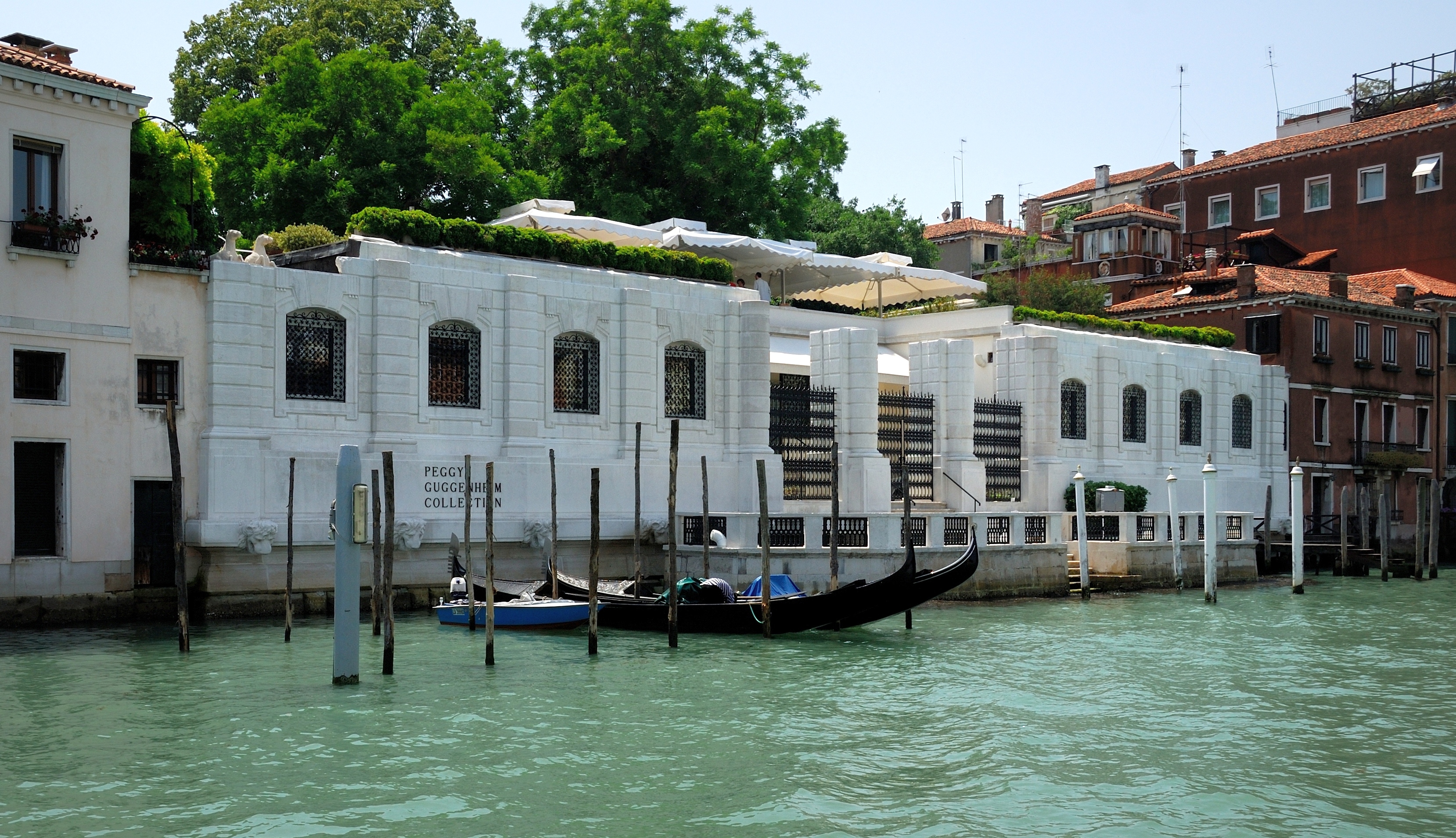 Having failed in its 2013 bid to ban oversized cruise ships from the Giudecca Canal, the city switched to a new strategy in mid-2017, banning the creation of any additional hotels. Currently, there are over 24,000 hotel rooms. The ban does not affect short-term rentals in the historic centre which are causing an increase in the cost of living for the native residents of Venice. The city had already banned any additional fast food "take-away" outlets, to retain the historic character of the city, which was another reason for freezing the number of hotel rooms. Fewer than half of the millions of annual visitors stay overnight, however.
The city also considered a ban on wheeled suitcases, but settled for banning hard plastic wheels for transporting cargo from May 2015.
In addition to accelerating erosion of the ancient city's foundations and creating some pollution in the lagoon, cruise ships dropping an excessive number of day trippers can make St. Marks Square and other popular attractions too crowded to walk through during the peak season. Government officials see little value to the economy from the "eat and flee" tourists who stay for less than a day, which is typical of those from cruise ships.
Some locals continued to aggressively lobby for new methods that would reduce the number of cruise ship passengers; their estimate indicated that there are up to 30,000 such sightseers per day at peak periods, while others concentrate their effort on promoting a more responsible way of visiting the city. An unofficial referendum to ban large cruise ships was held in June 2017. More than 18,000 people voted at 60 polling booths set up by activists, and 17,874 favored banning large ships from the lagoon. The population of Venice at the time was about 50,000. The organizers of the referendum backed a plan to build a new cruise ship terminal at one of the three entrances to the Venetian Lagoon. Passengers would be transferred to the historic area in smaller boats.
On 28 February 2019, the Venice City Council voted in favour of a new municipal regulation requiring day-trippers visiting the historic centre, and the islands in the lagoon, to pay a new access fee. The extra revenue from the fee would be used for cleaning, maintaining security, reducing the financial burden on residents of Venice, and to "allow Venetians to live with more decorum". The new tax would be between €3 and €10 per person, depending on the expected tourist flow into the old city. The fee could be waived for certain types of travelers: including students, children under the age of 6, voluntary workers, residents of the Veneto region, and participants in sporting events. Overnight visitors, who already pay a "stay" tax and account for around 40% of Venice's yearly total of 28 million visitors, would also be exempted. The access fee was expected to come into effect in September 2019; but it was postponed, firstly, until 1 January 2020, and then, again, due to the coronavirus pandemic. The new charges would be imposed on those tourists who were not staying overnight and is expected to come into force on 1 January 2022.
Having failed in its 2013 bid to ban oversized cruise ships from the Giudecca Canal, the city switched to a new strategy in mid-2017, banning the creation of any additional hotels. Currently, there are over 24,000 hotel rooms. The ban does not affect short-term rentals in the historic centre which are causing an increase in the cost of living for the native residents of Venice. The city had already banned any additional fast food "take-away" outlets, to retain the historic character of the city, which was another reason for freezing the number of hotel rooms. Fewer than half of the millions of annual visitors stay overnight, however.
The city also considered a ban on wheeled suitcases, but settled for banning hard plastic wheels for transporting cargo from May 2015.
In addition to accelerating erosion of the ancient city's foundations and creating some pollution in the lagoon, cruise ships dropping an excessive number of day trippers can make St. Marks Square and other popular attractions too crowded to walk through during the peak season. Government officials see little value to the economy from the "eat and flee" tourists who stay for less than a day, which is typical of those from cruise ships.
Some locals continued to aggressively lobby for new methods that would reduce the number of cruise ship passengers; their estimate indicated that there are up to 30,000 such sightseers per day at peak periods, while others concentrate their effort on promoting a more responsible way of visiting the city. An unofficial referendum to ban large cruise ships was held in June 2017. More than 18,000 people voted at 60 polling booths set up by activists, and 17,874 favored banning large ships from the lagoon. The population of Venice at the time was about 50,000. The organizers of the referendum backed a plan to build a new cruise ship terminal at one of the three entrances to the Venetian Lagoon. Passengers would be transferred to the historic area in smaller boats.
On 28 February 2019, the Venice City Council voted in favour of a new municipal regulation requiring day-trippers visiting the historic centre, and the islands in the lagoon, to pay a new access fee. The extra revenue from the fee would be used for cleaning, maintaining security, reducing the financial burden on residents of Venice, and to "allow Venetians to live with more decorum". The new tax would be between €3 and €10 per person, depending on the expected tourist flow into the old city. The fee could be waived for certain types of travelers: including students, children under the age of 6, voluntary workers, residents of the Veneto region, and participants in sporting events. Overnight visitors, who already pay a "stay" tax and account for around 40% of Venice's yearly total of 28 million visitors, would also be exempted. The access fee was expected to come into effect in September 2019; but it was postponed, firstly, until 1 January 2020, and then, again, due to the coronavirus pandemic. The new charges would be imposed on those tourists who were not staying overnight and is expected to come into force on 1 January 2022.
Diverting cruise ships
 Having failed in its 2013 bid to ban oversized cruise ships from the Giudecca Canal, the Italian inter-ministerial ''Comitatone'' overseeing Venice's lagoon released an official directive in November 2017 to keep the largest cruise ships away from the Piazza San Marco and the entrance to the Grand Canal. Ships over 55,000 tons will be required to follow a specific route through the Vittorio Emmanuele III Canal to reach Marghera, an industrial area of the mainland, where a passenger terminal would be built.
Having failed in its 2013 bid to ban oversized cruise ships from the Giudecca Canal, the Italian inter-ministerial ''Comitatone'' overseeing Venice's lagoon released an official directive in November 2017 to keep the largest cruise ships away from the Piazza San Marco and the entrance to the Grand Canal. Ships over 55,000 tons will be required to follow a specific route through the Vittorio Emmanuele III Canal to reach Marghera, an industrial area of the mainland, where a passenger terminal would be built.
 In 2014, the United Nations warned the city that it may be placed on UNESCO's List of World Heritage in Danger sites unless cruise ships are banned from the canals near the historic centre.
According to the officials, the plan to create an alternate route for ships would require extensive dredging of the canal and the building of a new port, which would take four years, in total, to complete. However, the activist group ''No Grandi Navi'' (No big Ships), argued that the effects of pollution caused by the ships would not be diminished by the re-routing plan.
On 2 June 2019, the cruise ship ''MSC Opera'' rammed a tourist riverboat, the ''Uniworld, River Countess'', which was docked on the Giudecca Canal, injuring five people, in addition to causing property damage. The incident immediately led to renewed demands to ban large cruise ships from the Giudecca Canal, including a Twitter message to that effect posted by the environment minister. The city's mayor urged authorities to accelerate the steps required for cruise ships to begin using the alternate Vittorio Emanuele canal. Italy's transport minister spoke of a "solution to protect both the lagoon and tourism ... after many years of inertia" but specifics were not reported. , the 2017 plan to establish an alternative route for large ships, preventing them from coming near the historic area of the city, has not yet been approved.
Nonetheless, the Italian government released an announcement on 7 August 2019 that it would begin rerouting cruise ships larger than 1000 tonnes away from the historic city's Giudecca Canal. For the last four months of 2019, all heavy vessels will dock at the Fusina and Lombardia terminals which are still on the lagoon but away from the central islands. By 2020, one-third of all cruise ships will be rerouted, according to Danilo Toninelli, the minister for Venice. Preparation work for the Vittorio Emanuele Canal needed to begin soon for a long-term solution, according to the Cruise Lines International Association. In the long-term, space for ships would be provided at new terminals, perhaps at Chioggia or Lido San Nicolo. That plan was not imminent however, since public consultations had not yet begun. Over 1.5 million people per year arrive in Venice on cruise ships. The Italian government decided to divert large cruise ships beginning August 2021.
In 2014, the United Nations warned the city that it may be placed on UNESCO's List of World Heritage in Danger sites unless cruise ships are banned from the canals near the historic centre.
According to the officials, the plan to create an alternate route for ships would require extensive dredging of the canal and the building of a new port, which would take four years, in total, to complete. However, the activist group ''No Grandi Navi'' (No big Ships), argued that the effects of pollution caused by the ships would not be diminished by the re-routing plan.
On 2 June 2019, the cruise ship ''MSC Opera'' rammed a tourist riverboat, the ''Uniworld, River Countess'', which was docked on the Giudecca Canal, injuring five people, in addition to causing property damage. The incident immediately led to renewed demands to ban large cruise ships from the Giudecca Canal, including a Twitter message to that effect posted by the environment minister. The city's mayor urged authorities to accelerate the steps required for cruise ships to begin using the alternate Vittorio Emanuele canal. Italy's transport minister spoke of a "solution to protect both the lagoon and tourism ... after many years of inertia" but specifics were not reported. , the 2017 plan to establish an alternative route for large ships, preventing them from coming near the historic area of the city, has not yet been approved.
Nonetheless, the Italian government released an announcement on 7 August 2019 that it would begin rerouting cruise ships larger than 1000 tonnes away from the historic city's Giudecca Canal. For the last four months of 2019, all heavy vessels will dock at the Fusina and Lombardia terminals which are still on the lagoon but away from the central islands. By 2020, one-third of all cruise ships will be rerouted, according to Danilo Toninelli, the minister for Venice. Preparation work for the Vittorio Emanuele Canal needed to begin soon for a long-term solution, according to the Cruise Lines International Association. In the long-term, space for ships would be provided at new terminals, perhaps at Chioggia or Lido San Nicolo. That plan was not imminent however, since public consultations had not yet begun. Over 1.5 million people per year arrive in Venice on cruise ships. The Italian government decided to divert large cruise ships beginning August 2021.
Transport
In the historic centre


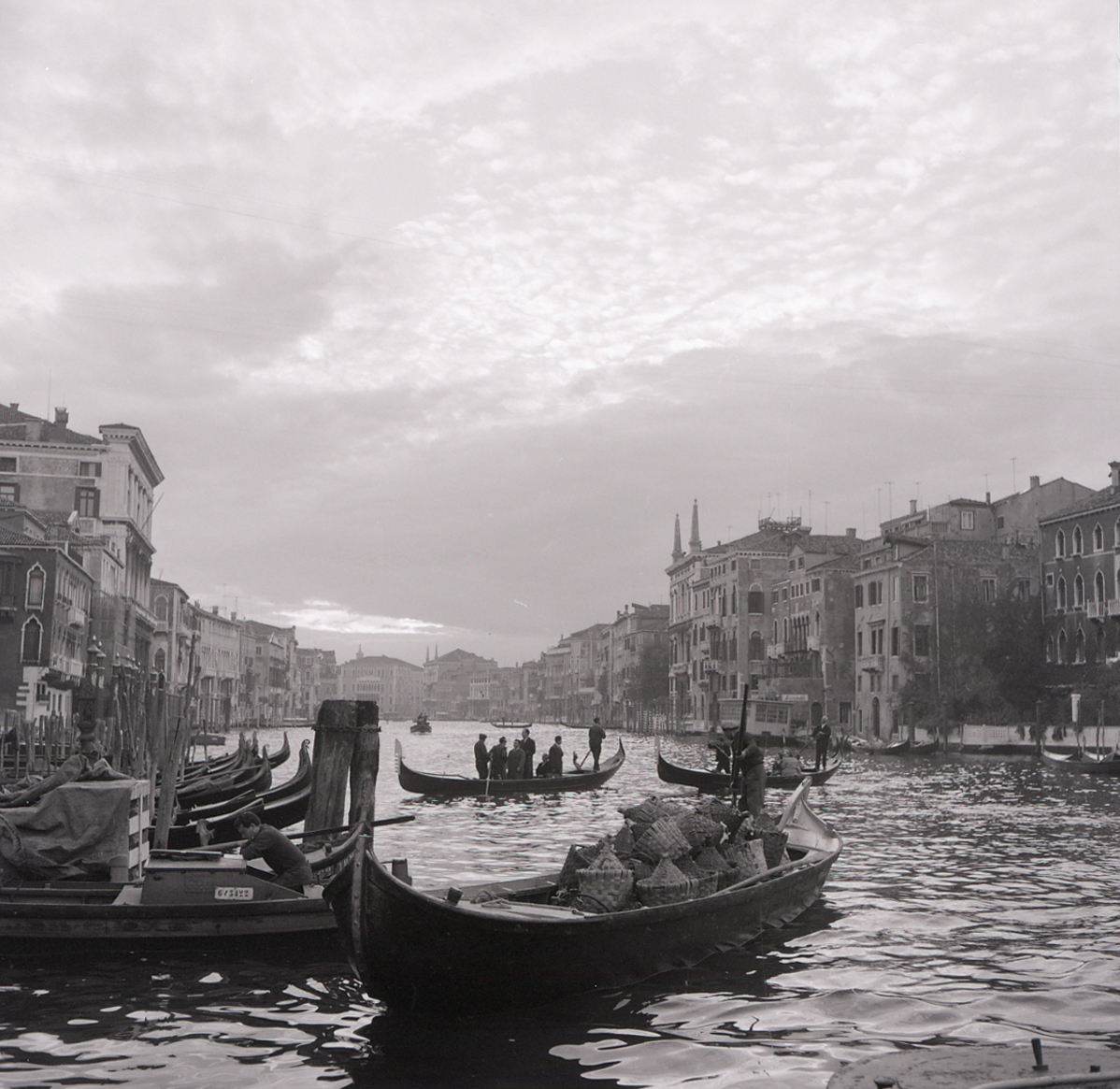 Venice is built on an archipelago of 118 islands in a shallow, Venetian lagoon, lagoon, connected by 400 bridges over 177 canals. In the 19th century, a causeway to the mainland brought the railroad to Venezia Santa Lucia railway station, Venice. The adjoining Ponte della Libertà road causeway and terminal parking facilities in Tronchetto island and Piazzale Roma were built during the 20th century. Beyond these rail and road terminals on the northern edge of the city, transportation within the city's historic centre remains, as it was in centuries past, entirely on water or on foot. Venice is Europe's largest urban Auto-free zones, car-free area and is unique in Europe in having remained a sizable functioning city in the 21st century entirely without motorcars or trucks.
The classic Venetian boat is the ''gondola'', (plural: ''gondole'') although it is now mostly used for tourists, or for weddings, funerals, or other ceremonies, or as ''traghetti'' (sing.: traghetto) to cross the Grand Canal in lieu of a nearby bridge. The traghetti are operated by two oarsmen. For some years there were seven such boats; but by 2017, only three remained.
There are approximately 400 licensed gondoliers in Venice, in their distinctive livery, and a similar number of boats, down from 10,000 two centuries ago. Many gondolas are lushly appointed with crushed velvet seats and Persian rugs. At the front of each gondola that works in the city, there is a large piece of metal called the ''fèro'' (iron). Its shape has evolved through the centuries, as documented in many well-known paintings. Its form, topped by a likeness of the Doge's hat, became gradually standardized, and was then fixed by local law. It consists of six bars pointing forward representing the sestieri of the city, and one that points backwards representing the Giudecca. A lesser-known boat is the smaller, simpler, but similar, sandolo.
Venice is built on an archipelago of 118 islands in a shallow, Venetian lagoon, lagoon, connected by 400 bridges over 177 canals. In the 19th century, a causeway to the mainland brought the railroad to Venezia Santa Lucia railway station, Venice. The adjoining Ponte della Libertà road causeway and terminal parking facilities in Tronchetto island and Piazzale Roma were built during the 20th century. Beyond these rail and road terminals on the northern edge of the city, transportation within the city's historic centre remains, as it was in centuries past, entirely on water or on foot. Venice is Europe's largest urban Auto-free zones, car-free area and is unique in Europe in having remained a sizable functioning city in the 21st century entirely without motorcars or trucks.
The classic Venetian boat is the ''gondola'', (plural: ''gondole'') although it is now mostly used for tourists, or for weddings, funerals, or other ceremonies, or as ''traghetti'' (sing.: traghetto) to cross the Grand Canal in lieu of a nearby bridge. The traghetti are operated by two oarsmen. For some years there were seven such boats; but by 2017, only three remained.
There are approximately 400 licensed gondoliers in Venice, in their distinctive livery, and a similar number of boats, down from 10,000 two centuries ago. Many gondolas are lushly appointed with crushed velvet seats and Persian rugs. At the front of each gondola that works in the city, there is a large piece of metal called the ''fèro'' (iron). Its shape has evolved through the centuries, as documented in many well-known paintings. Its form, topped by a likeness of the Doge's hat, became gradually standardized, and was then fixed by local law. It consists of six bars pointing forward representing the sestieri of the city, and one that points backwards representing the Giudecca. A lesser-known boat is the smaller, simpler, but similar, sandolo.
Waterways
 Venice's small islands were enhanced during the Middle Ages by the dredging of soil to raise the marshy ground above the tides. The resulting canals encouraged the flourishing of a nautical culture which proved central to the economy of the city. Today those canals still provide the means for transport of goods and people within the city.
The maze of canals threading through the city requires more than 400 bridges to permit the flow of foot traffic. In 2011, the city opened the Ponte della Costituzione, the fourth bridge across the Grand Canal, which connects the Piazzale Roma bus-terminal area with the Venezia Santa Lucia railway station. The other bridges are the original Ponte di Rialto, the Ponte dell'Accademia, and the Ponte degli Scalzi.
Venice's small islands were enhanced during the Middle Ages by the dredging of soil to raise the marshy ground above the tides. The resulting canals encouraged the flourishing of a nautical culture which proved central to the economy of the city. Today those canals still provide the means for transport of goods and people within the city.
The maze of canals threading through the city requires more than 400 bridges to permit the flow of foot traffic. In 2011, the city opened the Ponte della Costituzione, the fourth bridge across the Grand Canal, which connects the Piazzale Roma bus-terminal area with the Venezia Santa Lucia railway station. The other bridges are the original Ponte di Rialto, the Ponte dell'Accademia, and the Ponte degli Scalzi.
Public transport
Azienda del Consorzio Trasporti Veneziano (ACTV) is a public company responsible for public transportation in Venice.Lagoon area
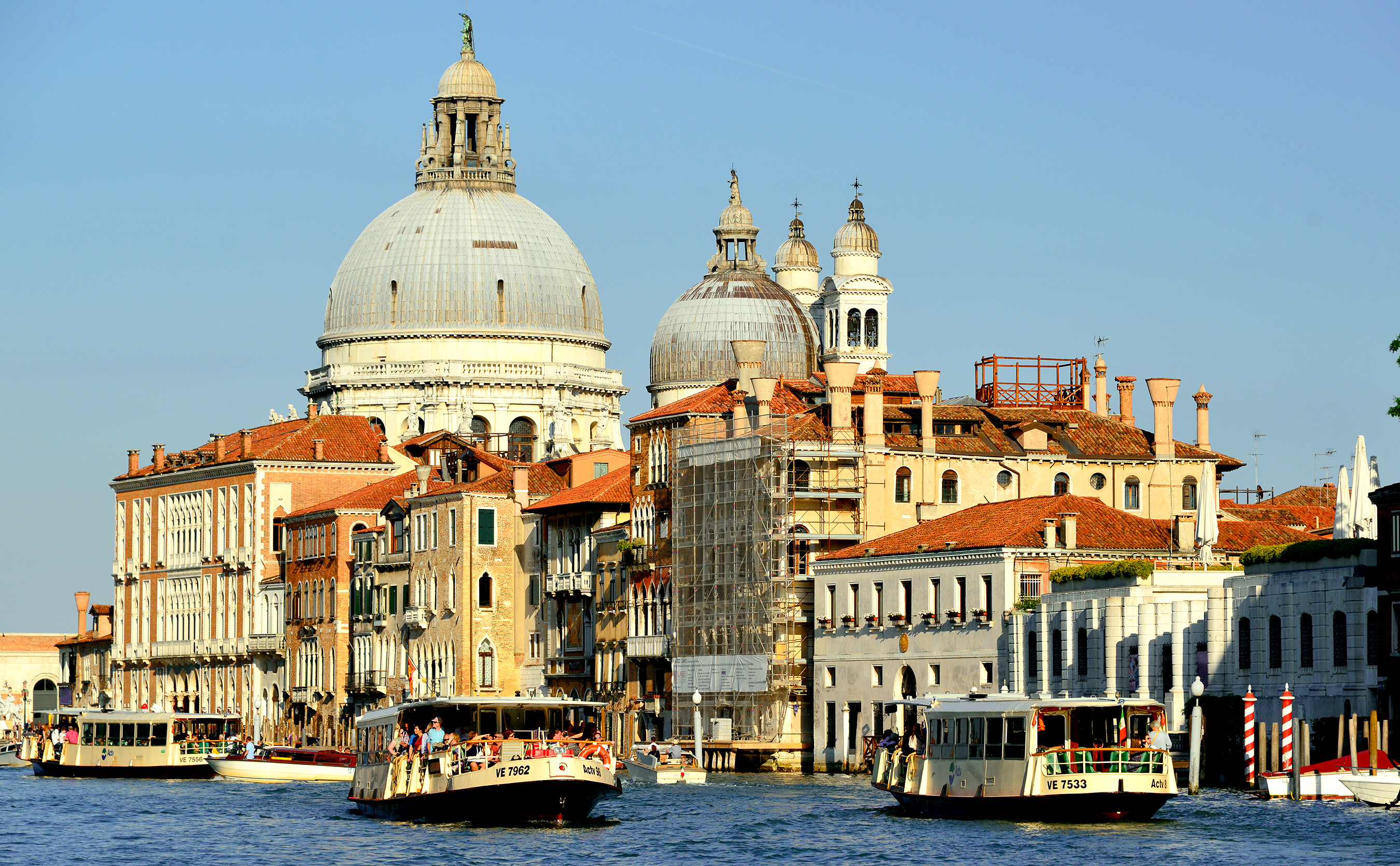 The main means of public transportation consists of motorised waterbuses (''vaporetto, vaporetti'') which ply regular routes along the Grand Canal and between the city's islands. Private motorised water taxis are also active. The only gondole still in common use by Venetians are the ''traghetti'', foot passenger ferry, ferries crossing the Grand Canal at certain points where there are no convenient bridges. Other gondole are rented by tourists on an hourly basis.
The Venice People Mover is an elevated shuttle train public transit system connecting Tronchetto island with its car parking facility with Piazzale Roma where visitors arrive in the city by bus, taxi, or automobile. The train makes a stop at the Marittima cruise terminal at the Port of Venice.
The main means of public transportation consists of motorised waterbuses (''vaporetto, vaporetti'') which ply regular routes along the Grand Canal and between the city's islands. Private motorised water taxis are also active. The only gondole still in common use by Venetians are the ''traghetti'', foot passenger ferry, ferries crossing the Grand Canal at certain points where there are no convenient bridges. Other gondole are rented by tourists on an hourly basis.
The Venice People Mover is an elevated shuttle train public transit system connecting Tronchetto island with its car parking facility with Piazzale Roma where visitors arrive in the city by bus, taxi, or automobile. The train makes a stop at the Marittima cruise terminal at the Port of Venice.
Lido and Pellestrina islands
Lido di Venezia, Lido and Pellestrina are two islands forming a barrier between the southern Venetian Lagoon and the Adriatic Sea. On those islands, road traffic, including bus service, is allowed. Vaporetti link them with other islands (Venice, Murano, Burano) and with the peninsula of Cavallino-Treporti.Mainland
The mainland of Venice is composed of 5 boroughs: Mestre-Carpenedo, Marghera, Chirignago-Zelarino, and Favaro Veneto. Mestre is the centre and the most populous urban area of the mainland. There are several bus routes and two Translohr Trams in Mestre, tramway lines. Several bus routes and one of the tramway lines link the mainland with ''Piazzale Roma'', the main bus station in Venice, via Ponte della Libertà, the road bridge connecting the mainland with the group of islands that comprise the historic centre of Venice. The average amount of time people spend commuting with public transit in Venice, for example to and from work, on a weekday is 52 min. Only 12.2% of public transit riders ride for more than 2 hours every day. The average amount of time people wait at a stop or station for public transit is 10 min, while 17.6% of riders wait for over 20 minutes on average every day. The average distance people usually ride in a single trip with public transit is , while 12% travel for over in a single direction.Rail
 Venice is serviced by regional and national trains, including trains to Florence (1h53), Milan (2h13), Turin (3h10), Rome (3h33), and Naples (4h50). In addition there are international day trains to Zurich, Innsbruck, Munich, and Vienna, plus overnight sleeper services, to Paris and Dijon on Thello trains, and to Munich and Vienna via Austrian Federal Railways, ÖBB.
* The Venezia Santa Lucia railway station is a few steps away from a vaporetti stop in the historic city next to the ''Piazzale Roma''. As well as for other, local trains, this station is the terminus of the luxury Venice Simplon Orient Express from London via Paris and other cities.
* The Venezia Mestre railway station is on the mainland, on the border between the boroughs of Mestre and Marghera.
Both stations are managed by Grandi Stazioni; they are linked by the ''Ponte della Libertà'' (Liberty Bridge) between the mainland and the city centre.
Other stations in the municipality are Venezia Porto Marghera, Venezia Carpenedo, Venezia Mestre Ospedale, and Venezia Mestre Porta Ovest.
Venice is serviced by regional and national trains, including trains to Florence (1h53), Milan (2h13), Turin (3h10), Rome (3h33), and Naples (4h50). In addition there are international day trains to Zurich, Innsbruck, Munich, and Vienna, plus overnight sleeper services, to Paris and Dijon on Thello trains, and to Munich and Vienna via Austrian Federal Railways, ÖBB.
* The Venezia Santa Lucia railway station is a few steps away from a vaporetti stop in the historic city next to the ''Piazzale Roma''. As well as for other, local trains, this station is the terminus of the luxury Venice Simplon Orient Express from London via Paris and other cities.
* The Venezia Mestre railway station is on the mainland, on the border between the boroughs of Mestre and Marghera.
Both stations are managed by Grandi Stazioni; they are linked by the ''Ponte della Libertà'' (Liberty Bridge) between the mainland and the city centre.
Other stations in the municipality are Venezia Porto Marghera, Venezia Carpenedo, Venezia Mestre Ospedale, and Venezia Mestre Porta Ovest.
Ports

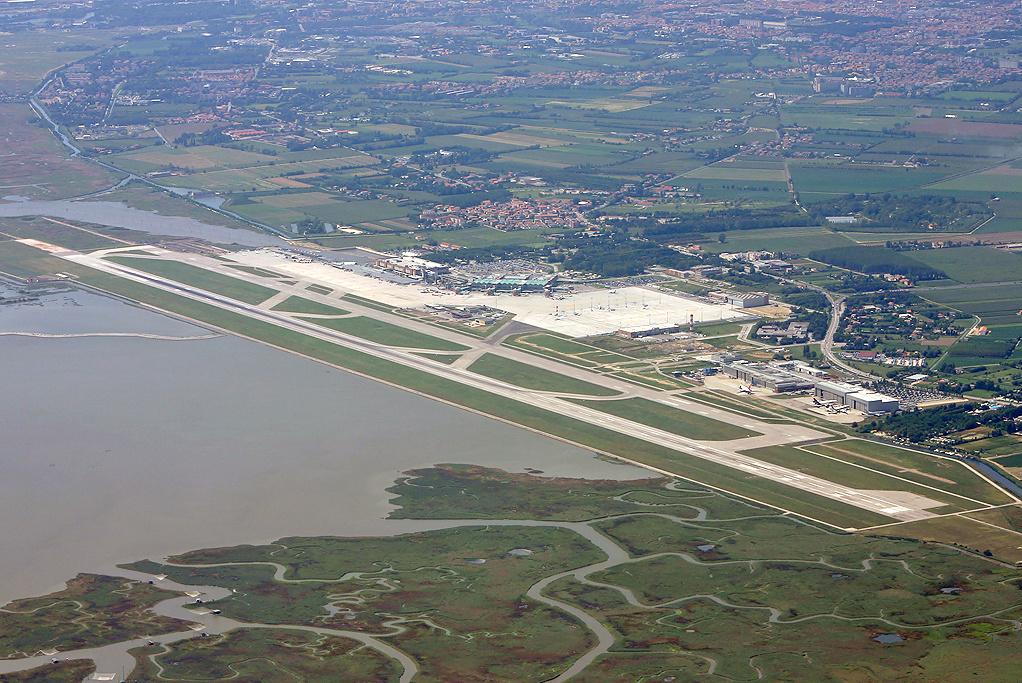 The Port of Venice ( it, Porto di Venezia) is the eighth-busiest commercial port in Italy and was a major hub for the cruise sector in the Mediterranean, as since August 2021 ships of more 25,000 tons are forbidden to pass the Giudecca Canal. It is one of the major Italian ports and is included in the list of the leading European ports which are located on the strategic nodes of trans-European networks. In 2002, the port handled 262,337 containers. In 2006, 30,936,931 tonnes passed through the port, of which 14,541,961 was commercial traffic, and saw 1,453,513 passengers.
The Port of Venice ( it, Porto di Venezia) is the eighth-busiest commercial port in Italy and was a major hub for the cruise sector in the Mediterranean, as since August 2021 ships of more 25,000 tons are forbidden to pass the Giudecca Canal. It is one of the major Italian ports and is included in the list of the leading European ports which are located on the strategic nodes of trans-European networks. In 2002, the port handled 262,337 containers. In 2006, 30,936,931 tonnes passed through the port, of which 14,541,961 was commercial traffic, and saw 1,453,513 passengers.
Aviation
The Marco Polo International Airport (''Aeroporto di Venezia Marco Polo'') is named in honor of Marco Polo. The airport is on the mainland and was rebuilt away from the coast. Public transport from the airport takes one to: * Venice Piazzale Roma by ATVO (provincial company) buses and by ACTV (city company) buses (route 5 ''aerobus''); * Venice, Lido, and Murano by Alilaguna (private company) motor boats; * Mestre, the mainland, where Venice Mestre railway station is convenient for connections to Milan,Sport
The most famous Venetian sport is probably ' ("Venetian-style rowing"), also commonly called ''voga veneta''. A technique invented in the Venetian Lagoon, Venetian rowing is unusual in that the rower(s), one or more, row standing, looking forward. Today, ''Voga alla Veneta'' is not only the way the gondoliers row tourists around Venice but also the way Venetians row for pleasure and sport. Many races called ''regata(e)'' happen throughout the year. The culminating event of the rowing season is the day of the "Regata Storica", which occurs on the first Sunday of September each year. The main football club in the city is Venezia F.C., founded in 1907, which currently plays in the Serie B. Their ground, the Stadio Pier Luigi Penzo, situated in Sant'Elena (island), Sant'Elena, is one of the oldest sports venues in Italy. The local basketball club is Reyer Venezia, founded in 1872 as the gymnastics club ''Società Sportiva Costantino Reyer'', and in 1907 as the basketball club. Reyer currently plays in the Lega Basket Serie A. The men's team were the Italian champions in 1942, 1943, and 2017. Their arena is the Palasport Giuseppe Taliercio, situated in Mestre. Luigi Brugnaro is both the president of the club and the mayor of the city.Education
 Venice is a major international centre for higher education. The city hosts the Ca' Foscari University of Venice, founded in 1868; the Università Iuav di Venezia, founded in 1926; the Venice International University, founded in 1995 and located on the island of San Servolo and the European Inter-University Centre for Human Rights and Democratisation, EIUC-European Inter-University Centre for Human Rights and Democratisation, located on the island of Lido di Venezia.
Other Venetian institutions of higher education are: the Accademia di Belle Arti di Venezia, ''Accademia di Belle Arti'' (Academy of Fine Arts), established in 1750, whose first chairman was Giovanni Battista Piazzetta, and the Conservatorio di Musica Benedetto Marcello di Venezia, Benedetto Marcello Conservatory of Music, which was first established in 1876 as a high school and musical society, later (1915) became ''Liceo Musicale'', and then, when its director was Gian Francesco Malipiero, the State Conservatory of Music (1940).
Venice is a major international centre for higher education. The city hosts the Ca' Foscari University of Venice, founded in 1868; the Università Iuav di Venezia, founded in 1926; the Venice International University, founded in 1995 and located on the island of San Servolo and the European Inter-University Centre for Human Rights and Democratisation, EIUC-European Inter-University Centre for Human Rights and Democratisation, located on the island of Lido di Venezia.
Other Venetian institutions of higher education are: the Accademia di Belle Arti di Venezia, ''Accademia di Belle Arti'' (Academy of Fine Arts), established in 1750, whose first chairman was Giovanni Battista Piazzetta, and the Conservatorio di Musica Benedetto Marcello di Venezia, Benedetto Marcello Conservatory of Music, which was first established in 1876 as a high school and musical society, later (1915) became ''Liceo Musicale'', and then, when its director was Gian Francesco Malipiero, the State Conservatory of Music (1940).
Culture
Literature
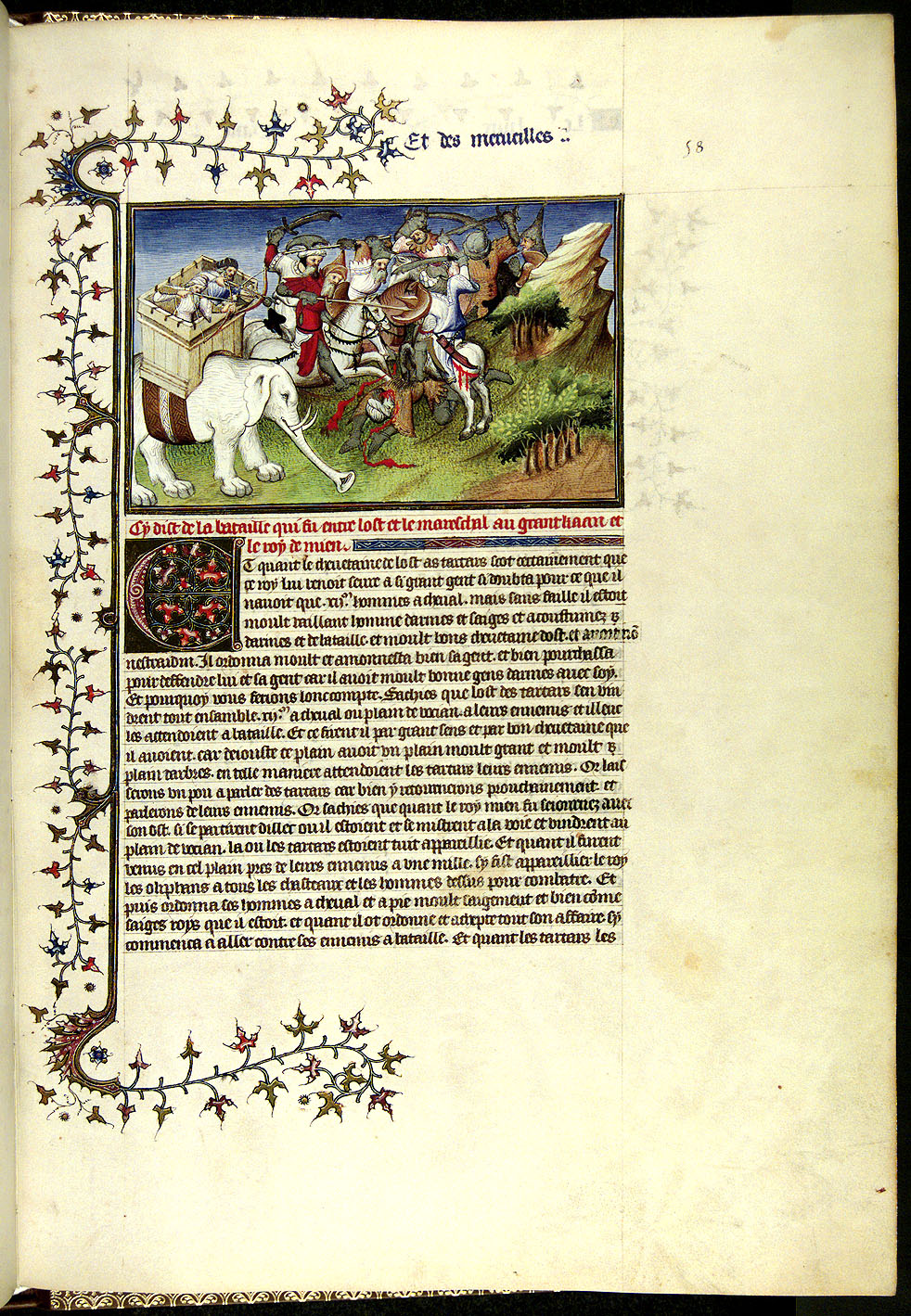 Venice has long been a source of inspiration for authors, playwrights, and poets, and at the forefront of the technological development of printing and publishing.
Two of the most noted Venetian writers were Marco Polo in the Middle Ages and, later, Giacomo Casanova. Polo (1254–1324) was a merchant who voyaged to the Orient. His series of books, co-written with Rustichello da Pisa and titled ''The Travels of Marco Polo, Il Milione'' provided important knowledge of the lands east of Europe, from the Middle East to China, Japan, and Russia. Giacomo Casanova (1725–1798) was a prolific writer and adventurer best remembered for his autobiography, ''Histoire De Ma Vie'' (''Story of My Life''), which links his colourful lifestyle to the city of Venice.
Venetian playwrights followed the old Italian theatre tradition of ''Commedia dell'arte''. Angelo Beolco, Ruzante (1502–1542), Carlo Goldoni (1707–1793), and Carlo Gozzi (1720–1806) used the Venetian dialect extensively in their comedies.
Venice has also inspired writers from abroad. Shakespeare set ''Othello'' and ''The Merchant of Venice'' in the city, as did Thomas Mann his novel, ''Death in Venice'' (1912). The French writer Philippe Sollers spent most of his life in Venice and published ''A Dictionary For Lovers of Venice'' in 2004.
The city features prominently in Henry James's ''The Aspern Papers'' and ''The Wings of the Dove''. It is also visited in Evelyn Waugh's ''Brideshead Revisited'' and Marcel Proust's ''In Search of Lost Time''. Perhaps the best-known children's book set in Venice is ''The Thief Lord'', written by the German author Cornelia Funke.
The poet Ugo Foscolo (1778–1827), born in Zakynthos, Zante, an island that at the time belonged to the Republic of Venice, was also a revolutionary who wanted to see a free republic established in Venice following its fall to
Venice has long been a source of inspiration for authors, playwrights, and poets, and at the forefront of the technological development of printing and publishing.
Two of the most noted Venetian writers were Marco Polo in the Middle Ages and, later, Giacomo Casanova. Polo (1254–1324) was a merchant who voyaged to the Orient. His series of books, co-written with Rustichello da Pisa and titled ''The Travels of Marco Polo, Il Milione'' provided important knowledge of the lands east of Europe, from the Middle East to China, Japan, and Russia. Giacomo Casanova (1725–1798) was a prolific writer and adventurer best remembered for his autobiography, ''Histoire De Ma Vie'' (''Story of My Life''), which links his colourful lifestyle to the city of Venice.
Venetian playwrights followed the old Italian theatre tradition of ''Commedia dell'arte''. Angelo Beolco, Ruzante (1502–1542), Carlo Goldoni (1707–1793), and Carlo Gozzi (1720–1806) used the Venetian dialect extensively in their comedies.
Venice has also inspired writers from abroad. Shakespeare set ''Othello'' and ''The Merchant of Venice'' in the city, as did Thomas Mann his novel, ''Death in Venice'' (1912). The French writer Philippe Sollers spent most of his life in Venice and published ''A Dictionary For Lovers of Venice'' in 2004.
The city features prominently in Henry James's ''The Aspern Papers'' and ''The Wings of the Dove''. It is also visited in Evelyn Waugh's ''Brideshead Revisited'' and Marcel Proust's ''In Search of Lost Time''. Perhaps the best-known children's book set in Venice is ''The Thief Lord'', written by the German author Cornelia Funke.
The poet Ugo Foscolo (1778–1827), born in Zakynthos, Zante, an island that at the time belonged to the Republic of Venice, was also a revolutionary who wanted to see a free republic established in Venice following its fall to In literature and adapted works
The city is a particularly popular setting for essays, novels, and other works of fictional or non-fictional literature. Examples of these include: * Aretino's works (1492-1556) * Shakespeare's ''Merchant of Venice'' () and ''Othello'' (1603). * Ben Jonson's ''Volpone'' (1605–6). * Casanova's autobiographical Histoire de ma vie, ''History of My Life'' . * Voltaire's ''Candide'' (1759). * Letitia Elizabeth Landon wrote poetry for two pictures of Venice; one for ''The Embarkation'', drawn by Clarkson Stanfield for The Amulet, 1833, the other for ''Santa Salute'', drawn by Charles Bentley (painter), Charles Bentley for the Literary Souvenir, 1835. * Ernest Hemingway's ''Across the River and into the Trees'' (1950). * Italo Calvino's ''Invisible Cities'' (1972). * Anne Rice's ''Cry to Heaven'' (1982). * Donna Leon's Commissario Guido Brunetti crime fiction series and cookbook, and the German television series based on the novels (1992–2019). * Philippe Sollers' ''Watteau in Venice'' (1994). * Michael Dibdin's ''Dead Lagoon'' (1994), one in a series of novels featuring Venice-born policeman Aurelio Zen. * Jacqueline Carey's ''Kushiel's Chosen'' (2002), an historical fantasy or alternate history of Venice—complete with masquerades, canals, and a doge—taking place in a city known as La Serenissima. * John Berendt's ''The City of Falling Angels'' (2005) Additionally, Thomas Mann's novella, ''Death in Venice'' (1912), was the basis for Benjamin Britten's Death in Venice (opera), eponymous opera (1973).Foreign words of Venetian origin
Some words with a Venetian etymology include :wikt:arsenal, arsenal, :wikt:ciao, ciao, :wikt:ghetto, ghetto, :wikt:gondola, gondola, :wikt:imbroglio, imbroglio, :wikt:lagoon, lagoon, :wikt:lazaret, lazaret, :wikt:lido, lido, :wikt:Montenegro, Montenegro, and :wikt:regatta, regatta.Printing
By the end of the 15th century, Venice had become the European capital of printing, having 417 printers by 1500, and being one of the first cities in Italy (after Subiaco and Rome) to have a printing press, after those established in Germany. The most important printing office was the Aldine Press of Aldus Manutius; which in 1497 issued the first printed work of Aristotle; in 1499 printed the ''Hypnerotomachia Poliphili'', considered the most beautiful book of thePainting
Venice, especially during theVenetian architecture
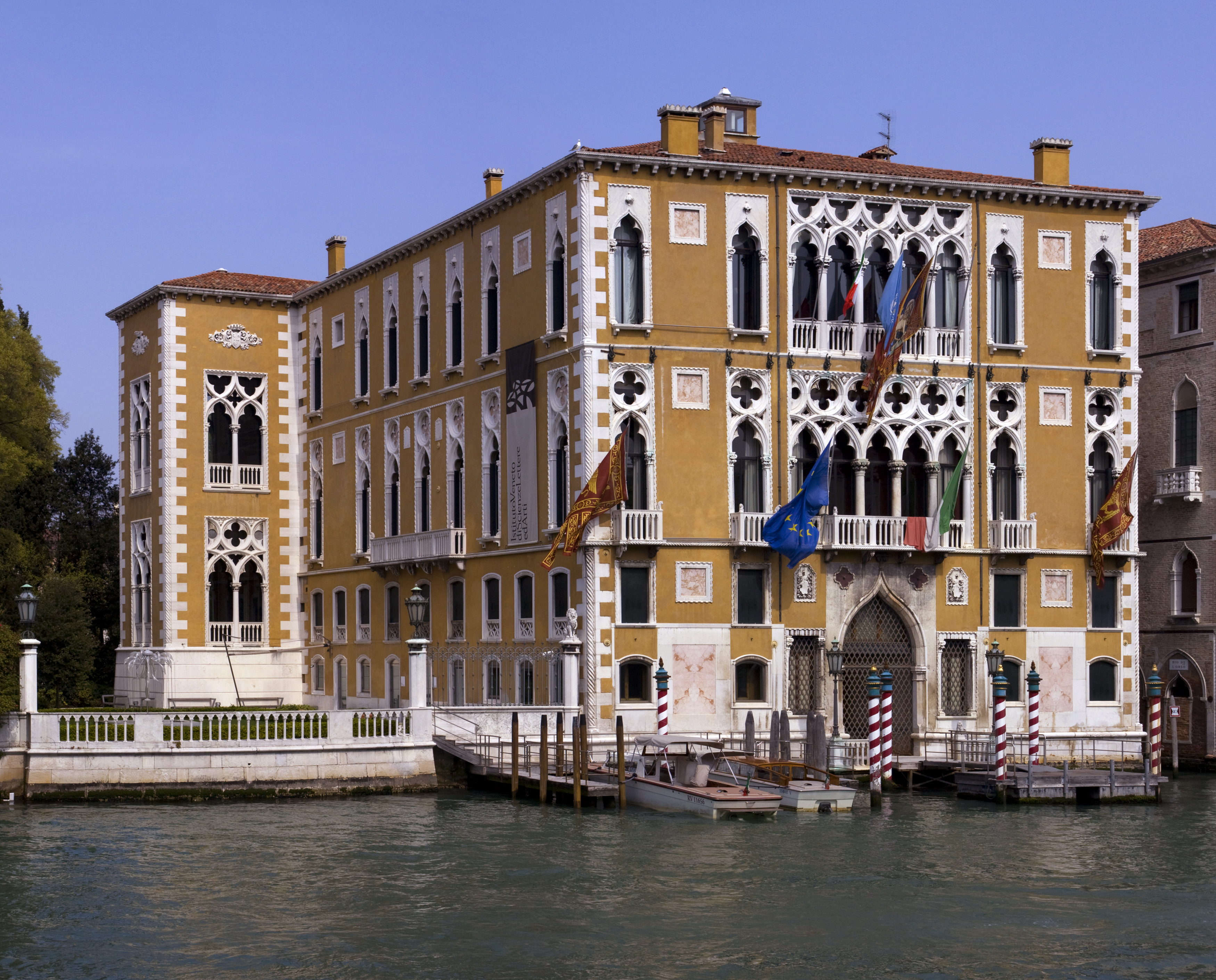
 Venice is built on unstable mud-banks, and had a very crowded city centre by the Middle Ages. On the other hand, the city was largely safe from riot, civil feuds, and invasion much earlier than most European cities. These factors, with the canals and the great wealth of the city, made for unique building styles.
Venice has a rich and diverse architectural style, the most prominent of which is the Gothic architecture, Gothic style. Venetian Gothic architecture is a term given to a Venetian building style combining the use of the Gothic lancet window, lancet arch with the curved ogee arch, due to Byzantine architecture, Byzantine and Ottoman architecture, Ottoman influences. The style originated in 14th-century Venice, with a confluence of Byzantine style from
Venice is built on unstable mud-banks, and had a very crowded city centre by the Middle Ages. On the other hand, the city was largely safe from riot, civil feuds, and invasion much earlier than most European cities. These factors, with the canals and the great wealth of the city, made for unique building styles.
Venice has a rich and diverse architectural style, the most prominent of which is the Gothic architecture, Gothic style. Venetian Gothic architecture is a term given to a Venetian building style combining the use of the Gothic lancet window, lancet arch with the curved ogee arch, due to Byzantine architecture, Byzantine and Ottoman architecture, Ottoman influences. The style originated in 14th-century Venice, with a confluence of Byzantine style from 

Rococo style
It can be argued that Venice produced the best and most refined Rococo designs. At the time, the Venetian economy was in decline. It had lost most of its maritime power, was lagging behind its rivals in political importance, and its society had become decadent, with tourism increasingly the mainstay of the economy. But Venice remained a centre of fashion.Miller (2005) p.82 Venetian rococo was well known as rich and luxurious, with usually very extravagant designs. Unique Venetian furniture types included the ''divani da portego'', and long rococo couches and ''pozzetti'', objects meant to be placed against the wall. Bedrooms of rich Venetians were usually sumptuous and grand, with rich damask, velvet, and silk drapery and curtains, and beautifully carved rococo beds with statues of putti, flowers, and angels. Venice was especially known for its beautiful Girandole, girandole mirrors, which remained among, if not the, finest in Europe. Chandeliers were usually very colourful, using Murano glass to make them look more vibrant and stand out from others; and precious stones and materials from abroad were used, since Venice still held a vast trade empire. Lacquer was very common, and many items of furniture were covered with it, the most noted being ''lacca povera'' (poor lacquer), in which allegories and images of social life were painted. Lacquerwork and Chinoiserie were particularly common in bureau cabinets.Glass
Venice is known for its ornate glass-work, known as Venetian glass, which is world-renowned for being colourful, elaborate, and skilfully made. Many of the important characteristics of these objects had been developed by the 13th century. Toward the end of that century, the centre of the Venetian glass industry moved to Murano, an offshore island in Venice. The glass made there is known as Murano glass.
 Byzantine craftsmen played an important role in the development of Venetian glass. When
Byzantine craftsmen played an important role in the development of Venetian glass. When Festivals
The Carnival of Venice is held annually in the city, It lasts for around two weeks and ends on Shrove Tuesday. Venetian masks are worn. The Venice Biennale is one of the most important events in the arts calendar. In 1895 an ''Esposizione biennale artistica nazionale'' (biennial exhibition of Italian art) was inaugurated. In September 1942, the activities of the Biennale were interrupted by the war, but resumed in 1948. The Festa del Redentore is held in mid-July. It began as a feast to give thanks for the end of the plague of 1576. A bridge of barges is built connecting Giudecca to the rest of Venice, and fireworks play an important role. The Venice Film Festival ( it, Mostra Internazionale d'Arte Cinematografica di Venezia) is the oldest film festival in the world. Founded by Count Giuseppe Volpi di Misurata in 1932 as the ''Esposizione Internazionale d'Arte Cinematografica'', the festival has since taken place every year in late August or early September on the island of the Lido di Venezia, Lido. Screenings take place in the historic Palazzo del Cinema on the Lungomare Marconi. It is one of the world's most prestigious film festivals and is part of the Venice Biennale.Music
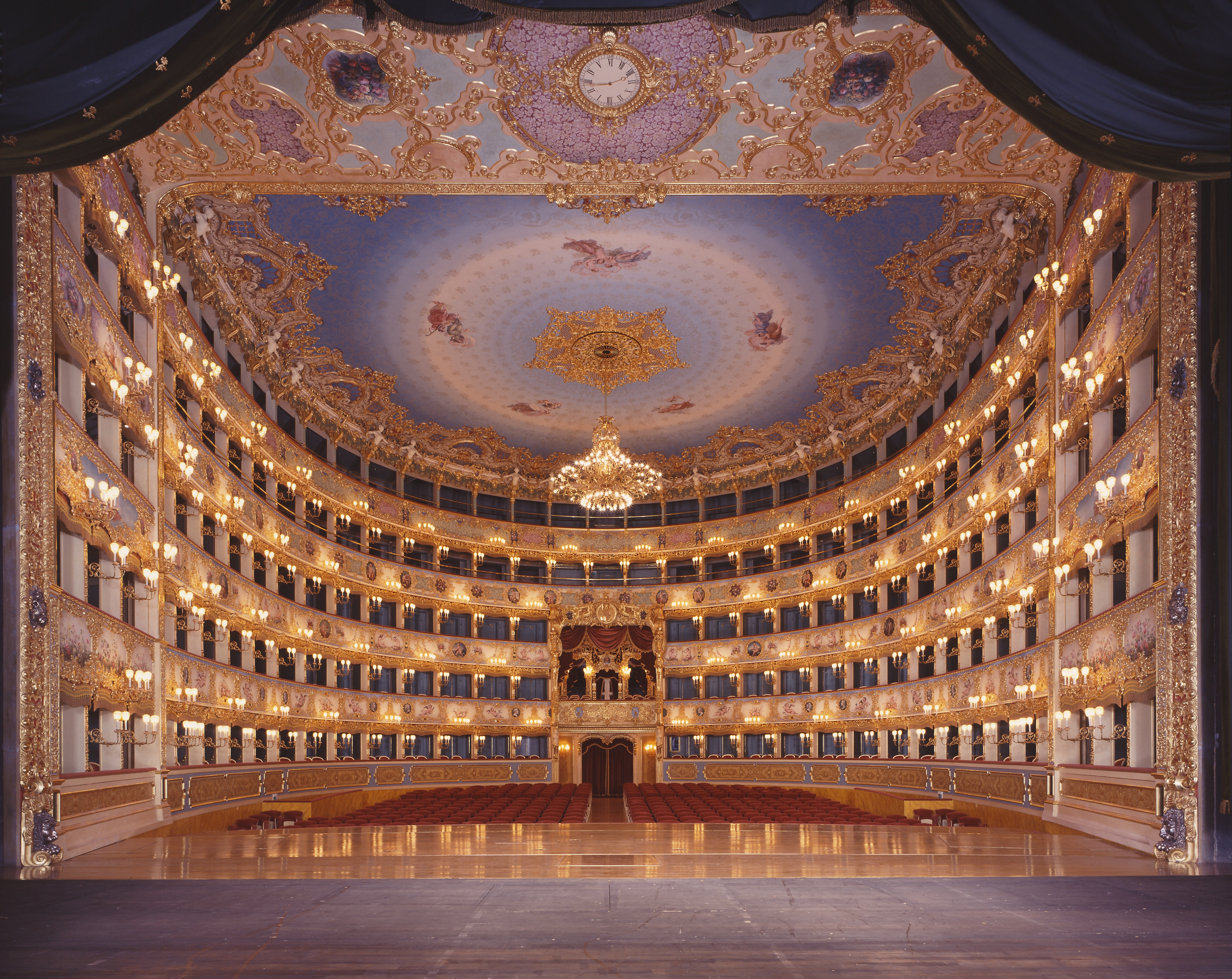 The city of Venice in Italy has played an important role in the development of the music of Italy. The Venetian state – i.e., the medieval
The city of Venice in Italy has played an important role in the development of the music of Italy. The Venetian state – i.e., the medieval Orchestras
Venice is the home of numerous symphony orchestras such as, the La Fenice, Orchestra della Fenice, Rondò Veneziano, Interpreti Veneziani, and Venice Baroque Orchestra.Cinema, media, and popular culture
 The city has been the setting or chosen location of numerous films, games, works of fine art and literature (including essays, fiction, non-fiction, and poems), music videos, television shows, and other cultural references.
The city has been the setting or chosen location of numerous films, games, works of fine art and literature (including essays, fiction, non-fiction, and poems), music videos, television shows, and other cultural references.
Photography
Fulvio Roiter was the pioneer in artistic photography in Venice, followed by a number of photographers whose works are often reproduced on postcards, thus reaching a widest international popular exposure.Cuisine
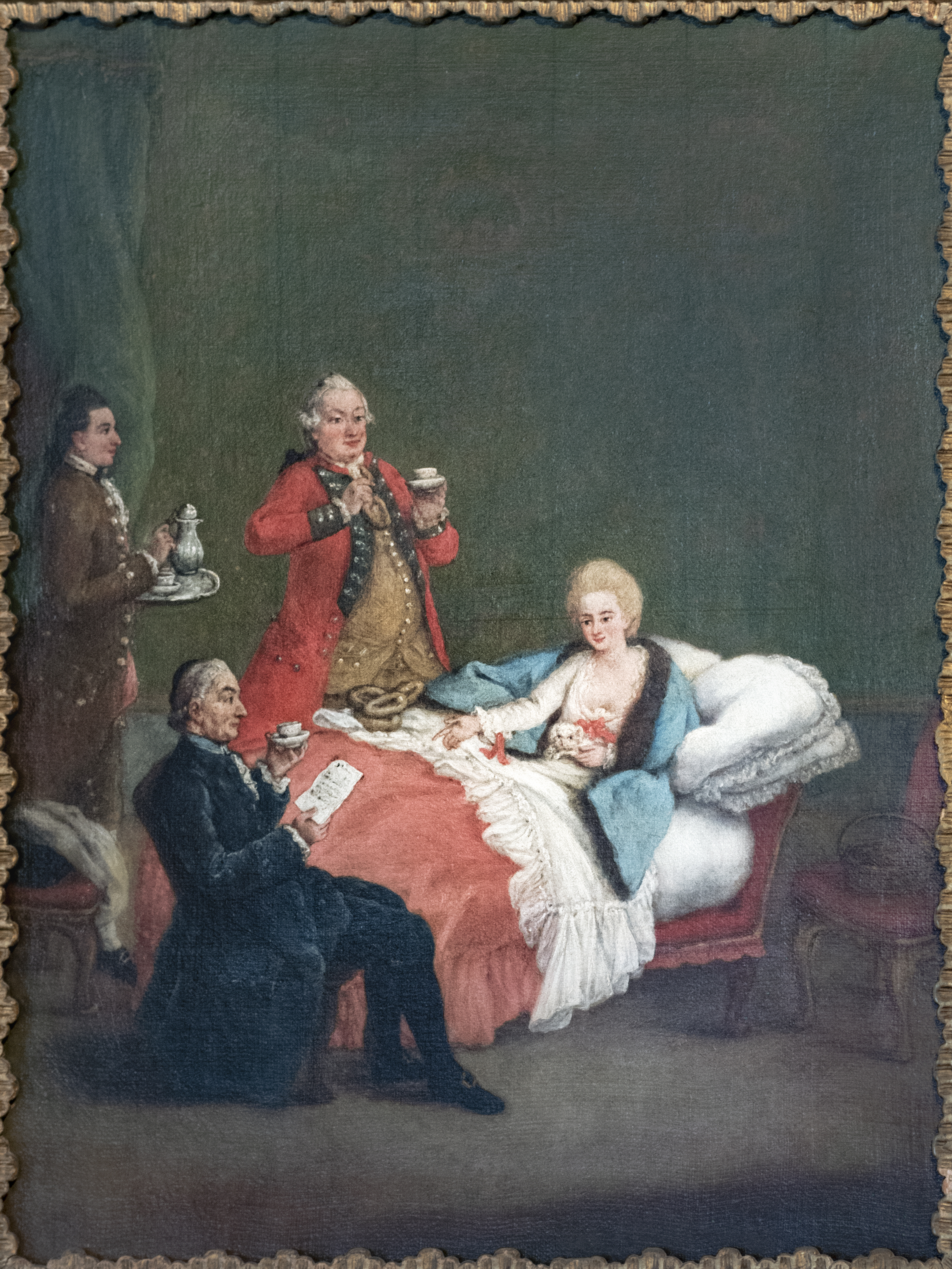 Venetian cuisine is characterized by seafood, but also includes garden products from the islands of the lagoon, rice from the mainland, game, and polenta. Venice is not known for a peculiar cuisine of its own: it combines local traditions with influences stemming from age-old contacts with distant countries. These include ''Sarde in saor, sarde in saór'' (sardines marinated to preserve them for long voyages); ''bacalà mantecato'' (a recipe based on Norwegian stockfish and extra-virgin olive oil); ''bisàto'' (marinated eel); ''risi e bisi'' – rice, peas and (unsmoked) bacon; ''fegato alla veneziana'', Venetian-style veal liver; ''risòto col néro de sépe'' (risotto with cuttlefish, blackened by their own ink); ''cichéti'', refined and delicious tidbits (akin to ''tapas''); ''antipasti'' (appetizers); and ''prosecco'', an effervescent, mildly sweet wine.
In addition, Venice is known for the golden, oval-shaped cookies called ''baicoli, baìcoli'', and for other types of sweets, such as: ''pan del pescaór'' (bread of the fisherman); cookies with almonds and pistachio nuts; cookies with fried Venetian cream, or the ''bussolài'' (butter biscuits and shortbread made in the shape of a ring or an "S") from the island of Burano; the ''galàni'' or ''cróstoli'' (angel wings); the ''frìtole'' (fried spherical doughnuts); the ''fregolòtta'' (a crumbly cake with almonds); a milk pudding called ''rosàda''; and cookies called ''zaléti'', whose ingredients include yellow maize flour.
The dessert tiramisu, tiramisù is generally thought to have been invented in
Venetian cuisine is characterized by seafood, but also includes garden products from the islands of the lagoon, rice from the mainland, game, and polenta. Venice is not known for a peculiar cuisine of its own: it combines local traditions with influences stemming from age-old contacts with distant countries. These include ''Sarde in saor, sarde in saór'' (sardines marinated to preserve them for long voyages); ''bacalà mantecato'' (a recipe based on Norwegian stockfish and extra-virgin olive oil); ''bisàto'' (marinated eel); ''risi e bisi'' – rice, peas and (unsmoked) bacon; ''fegato alla veneziana'', Venetian-style veal liver; ''risòto col néro de sépe'' (risotto with cuttlefish, blackened by their own ink); ''cichéti'', refined and delicious tidbits (akin to ''tapas''); ''antipasti'' (appetizers); and ''prosecco'', an effervescent, mildly sweet wine.
In addition, Venice is known for the golden, oval-shaped cookies called ''baicoli, baìcoli'', and for other types of sweets, such as: ''pan del pescaór'' (bread of the fisherman); cookies with almonds and pistachio nuts; cookies with fried Venetian cream, or the ''bussolài'' (butter biscuits and shortbread made in the shape of a ring or an "S") from the island of Burano; the ''galàni'' or ''cróstoli'' (angel wings); the ''frìtole'' (fried spherical doughnuts); the ''fregolòtta'' (a crumbly cake with almonds); a milk pudding called ''rosàda''; and cookies called ''zaléti'', whose ingredients include yellow maize flour.
The dessert tiramisu, tiramisù is generally thought to have been invented in Fashion and shopping
 In the 14th century, many young Venetian men began wearing tight-fitting multicoloured hose, the designs on which indicated the ''Compagnie della Calza'' ("Trouser Club") to which they belonged. The Venetian Senate passed sumptuary laws, but these merely resulted in changes in fashion in order to circumvent the law. Dull garments were worn over colourful ones, which then were cut to show the hidden colours resulting in the spread of men's "slashed" fashions in the 15th century.
Today, Venice is a major fashion and shopping centre; not as important as Milan, Florence, and Rome, but on a par with Verona, Turin, Vicenza, Naples, and Genoa. Roberta di Camerino is the only major Italian fashion brand to be based in Venice. Founded in 1945, it is renowned for its innovative handbags made by Venetian artisans and often covered in locally woven velvet.
In the 14th century, many young Venetian men began wearing tight-fitting multicoloured hose, the designs on which indicated the ''Compagnie della Calza'' ("Trouser Club") to which they belonged. The Venetian Senate passed sumptuary laws, but these merely resulted in changes in fashion in order to circumvent the law. Dull garments were worn over colourful ones, which then were cut to show the hidden colours resulting in the spread of men's "slashed" fashions in the 15th century.
Today, Venice is a major fashion and shopping centre; not as important as Milan, Florence, and Rome, but on a par with Verona, Turin, Vicenza, Naples, and Genoa. Roberta di Camerino is the only major Italian fashion brand to be based in Venice. Founded in 1945, it is renowned for its innovative handbags made by Venetian artisans and often covered in locally woven velvet.
International relations
Twin towns – sister cities
Venice is Sister city, twinned with: *Dubrovnik, Croatia *Istanbul, Turkey *Saint Petersburg, Russia *Sarajevo, Bosnia and Herzegovina *Suzhou, China *Tallinn, Estonia *Yerevan, Armenia *Odesa, Ukraine In 2013, Venice announced that it wants to end the sister city relationship with St. Petersburg in opposition to laws Russia had passed against homosexuals and those who support gay rights.Cooperation agreements
In January 2000, the City of Venice and the Central Association of Cities and Communities of Greece (KEDKE) established, in pursuance to Regulation (European Union), EC Regulation No. 2137/85, the Marco Polo System European economic interest grouping, European Economic Interest Grouping (E.E.I.G.), to promote and realise European projects within transnational cultural and tourist fields, particularly in reference to the preservation and safeguarding of artistic and architectural heritage. In April 2001, the city signed an agreement with the Ministry of Foreign Affairs (Italy), Ministry of Foreign Affairs's office of cultural promotion and cooperation, to coordinate efforts at promoting Italian culture abroad. Venice also has cooperation agreements with: * Nuremberg, Germany (1999) * Qingdao, China (2001, Science and Technology Partnership) * Thessaloniki, Greece (2003) * Miami, United States (2020)Places named after Venice
The name ":wikt:Venezuela, Venezuela" is a Spanish diminutive of Venice (''Veneziola'').Many additional places around the world are named after Venice: e.g. :Venice, Los Angeles, home of Venice Beach :Venice, Alberta, in Canada :Venice, Florida, city in Sarasota County :Venice, New York :Venice, Louisiana
Notable people
Others closely associated with the city include:

Music
* Andrea Gabrieli (ca.1510–1586), Italian composer and organist at St Mark's Basilica. * Giovanni Gabrieli (1554/1557–1612), composer and organist at St Mark's Basilica. * Claudio Monteverdi (1567–1643), composer, string player, choirmaster and Catholic priest. * Francesco Cavalli (1602–1676), a baroque music, baroque composer. *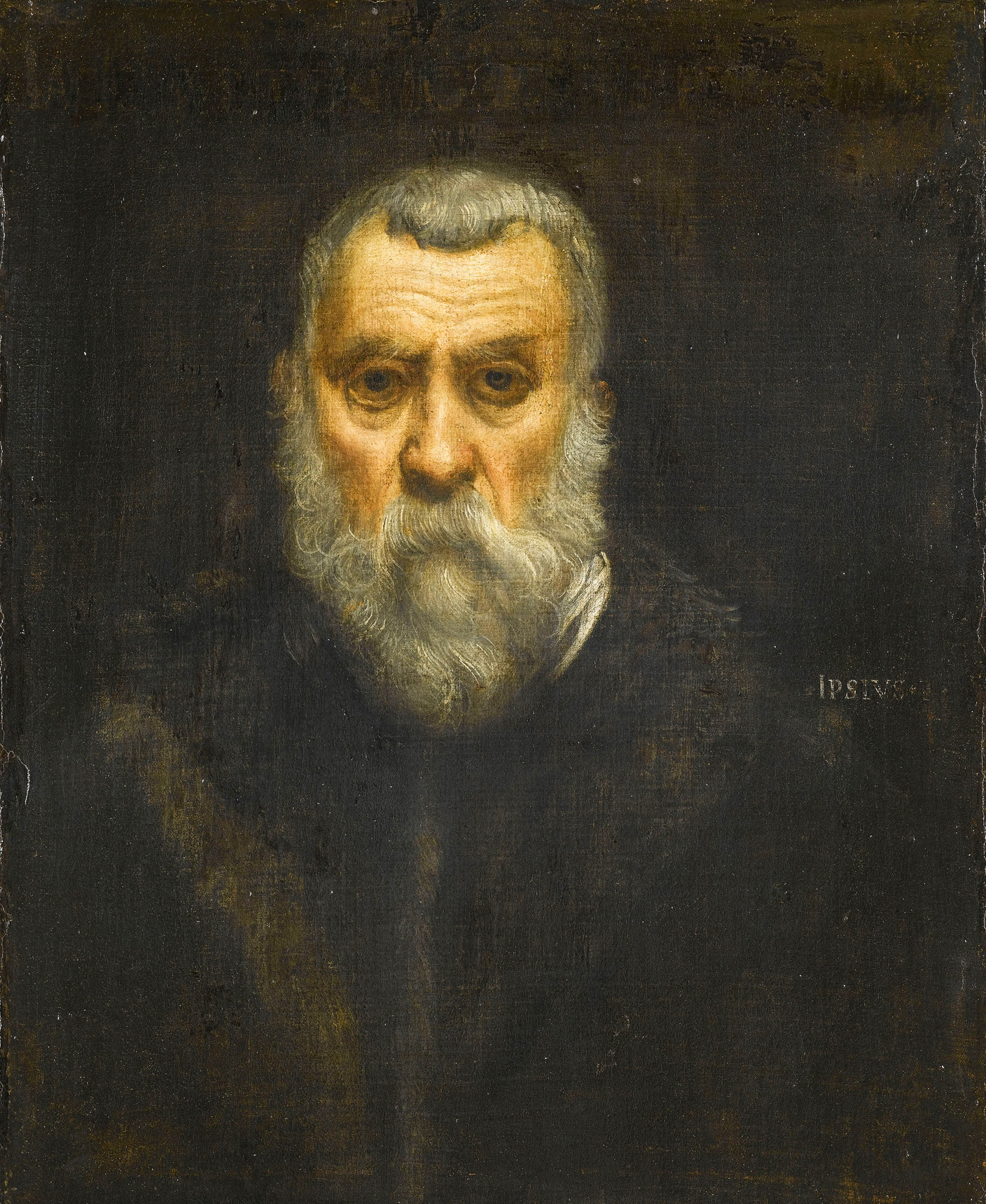
Painting
* Giovanni Bellini (ca.1430–1516), Renaissance painter from the Bellini family of painters. * Vittore Carpaccio (ca.1465 – 1525/1526), an Italian painter of the Venetian painting, Venetian school. * Lorenzo Lotto (ca.1480–1556), painter, draughtsman and illustrator, in the Venetian School (art), Venetian school. * Sebastiano del Piombo (ca.1485–1547), High Renaissance painter and early Mannerism, Mannerist. * Titian (ca.1488/90 – 1576), leader of the Venetian painting, Venetian school of the Italian Renaissance. * Tintoretto (1518–1594), the last great painter of Italian Renaissance. * Baldassare d'Anna (ca.1560 – after 1639), painter of the late-Writing
* Christine de Pizan (1364–ca.1430), a poet and court writer for King Charles VI of France * Aldus Manutius (1449–1515), an important printer, founded the Aldine Press. * Jean-Antoine de Baïf (1532–1589), a French poet and member of La Pléiade. * Veronica Franco (1546–1591), poet and courtesan during the Renaissance. * Paolo Sarpi (1552–1623), historian, scientist, canon lawyer, statesman, defender of the liberties of Republican Venice. His writings inspired Thomas Hobbes, Edward Gibbon, and the founding fathers of the United States. * Leon Modena (1571–1648), author, poet, preacher, active in the Venetian Ghetto. * Carlo Goldoni (1707–1793), playwright and librettist, notable name in Italian theatre. * Carlo Gozzi (1720–1806), playwright and champion of Commedia dell'arte. * Elisabetta Caminèr Turra (1751–1796), writer and translator of foreign plays. * Frederick Rolfe (1860–1913), English author of the Venetian novel ''The Desire and Pursuit of the Whole''.Doges & public servants
* Enrico Dandolo (ca.1107–1205), Doge of Venice from 1192 to his death, played a direct role in the Sack of Constantinople during the Fourth Crusade. * Pope Eugene IV (1383–1447), Pope, 1431-1447, nephew of Pope Gregory XII. * Pope Paul II (1417–1471), Pope, 1464-1471, succeeded Pope Pius II. * Andrea Gritti (1455–1538), Doge of the Venetian Republic from 1523 to 1538 * Pietro Bembo (1470–1547), scholar, poet, literary theorist and Catholic Cardinal, cardinal. * Sebastiano Venier (ca.1496–1578), Doge of Venice from 11 June 1577 to 1578. * Marco Antonio Bragadin (d. 1571), general, flayed alive by the Ottoman Empire, Turks after a fierce resistance during the siege of Famagusta. * Elena Lucrezia Cornaro Piscopia (1646–1684), the first woman in the world to receive a doctorate degree. * Jacopo Riccati (1676–1754) a Venetian mathematician, wrote the Riccati equation. * Pope Clement XIII (1693–1769), Pope, 1758 to his death in 1769. * Vincenzo Dandolo, Count Vincenzo Dandolo (1758–1819), chemist, agronomist and politician of the Enlightenment Era. * Daniele Manin (1804–1857) was an Italian patriot, statesman and leader of the Risorgimento in Venice.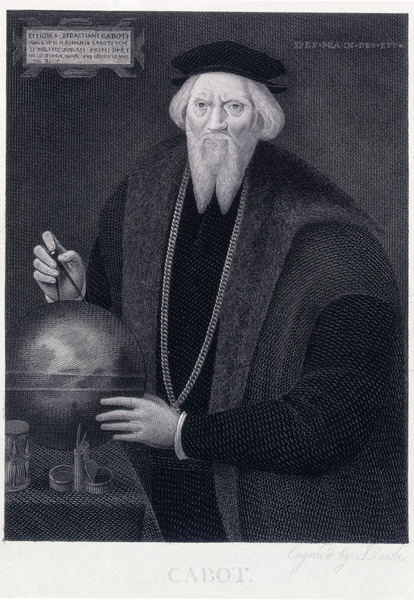
Explorers
* Marco Polo (ca.1254–1324), trader and exploration, explorer, one of the first Westerners to travel the Silk Road to China. * Sebastian Cabot (explorer), Sebastian Cabot (ca.1484–1557), List of explorers, explorer. * Pietro Cesare Alberti (1608–1655), the first Italian-American in New Amsterdam in 1635. * Giacomo Casanova (1725–1798 in Duchcov, Dux, Bohemia), a Venetian adventurer, writer and womanizing, womanizer.Architects
* Leon Battista Alberti (1404–1472) architect, humanist author, artist, poet, priest, linguist, philosopher and cryptographer. * Baldassare Longhena (1598–1682), exponent of Baroque architecture * Andrea Tirali (ca.1660–1737) architect, designed the pavement in the Piazza San Marco * Carlo Scarpa (1906–1978), an architect with a profound understanding of materials.Entertainers
* Marietta Zanfretta (1837–1898), high-wire dancer who found success in Europe and the USA * Romano Scarpa (1927–2005), a noted Italian creator of Disney comics. * Francesco Borgato (born 1990), Italian recording artist and dancer.Sport
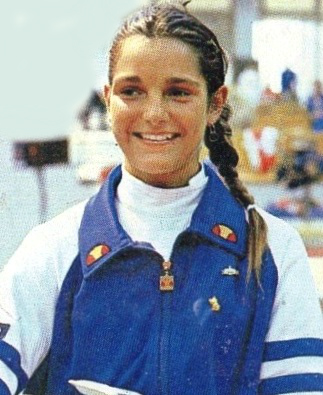 * Ercole Olgeni (1883–1947) rower, team gold and silver medallist at the 1920 Summer Olympics, 1920 & 1924 Summer Olympics
* Erminio Dones (1887–1945) rower, team silver medallist at the 1920 Summer Olympics
* Dominic DeNucci (1932–2021), Italian-American professional wrestler.
* Angelo Spanio (1939–1999), Italian footballer with over 280 club caps
* Ivano Bordon (born 1951) former football goalkeeper with 449 club caps and 21 for Italy national football team, Italy
* Mauro Numa (born 1961) fencer and gold medallist at the 1984 Summer Olympics
* Andrea Borella (born 1961) fencer, team gold medallist at the 1984 Summer Olympics
* Andrea Cipressa (born 1963) fencer, team gold medallist at the 1984 Summer Olympics
* Dorina Vaccaroni (born 1963) former foil fencer, three time medallist at the 1984 Summer Olympics, 1984, 1988 Summer Olympics, 1988 & 1992 Summer Olympics.
* Daniele Scarpa (born 1964) sprint canoer, gold and silver medallist at the 1996 Summer Olympics
* Carolina Morace (born 1964) former footballer with over 220 club caps and 150 for Italy women's national football team, Italy women
* Tommaso Rocchi (born 1977) former footballer with 664 club caps
* Ercole Olgeni (1883–1947) rower, team gold and silver medallist at the 1920 Summer Olympics, 1920 & 1924 Summer Olympics
* Erminio Dones (1887–1945) rower, team silver medallist at the 1920 Summer Olympics
* Dominic DeNucci (1932–2021), Italian-American professional wrestler.
* Angelo Spanio (1939–1999), Italian footballer with over 280 club caps
* Ivano Bordon (born 1951) former football goalkeeper with 449 club caps and 21 for Italy national football team, Italy
* Mauro Numa (born 1961) fencer and gold medallist at the 1984 Summer Olympics
* Andrea Borella (born 1961) fencer, team gold medallist at the 1984 Summer Olympics
* Andrea Cipressa (born 1963) fencer, team gold medallist at the 1984 Summer Olympics
* Dorina Vaccaroni (born 1963) former foil fencer, three time medallist at the 1984 Summer Olympics, 1984, 1988 Summer Olympics, 1988 & 1992 Summer Olympics.
* Daniele Scarpa (born 1964) sprint canoer, gold and silver medallist at the 1996 Summer Olympics
* Carolina Morace (born 1964) former footballer with over 220 club caps and 150 for Italy women's national football team, Italy women
* Tommaso Rocchi (born 1977) former footballer with 664 club caps
See also
* List of islands of Italy * List of buildings and structures in Venice * List of bridges in Venice * List of churches in Venice * List of car-free places * List of painters and architects of Venice * List of places called Venice of the East * Outline of Italy * Su e zo per i ponti * Venetian Blinds * Venetic language (the ancient spoken language of the region) * Venezia Mestre Rugby FC – rugby team * Venice of the NorthReferences
Bibliography
Academic
* * Horatio Brown, Brown, Horatio, ''Venice'', chapter 8 of ''Cambridge Modern History'' vol. I ''The Renaissance'' (1902) * Brown, Horatio, ''Calendar of State Papers (Venetian): 1581–1591'', 1895; ''1592–1603'', 1897; ''1603–1607'', 1900; ''1607–1610'', 1904; ''1610–1613'', 1905 * Brown, Horatio, ''Studies in the history of Venice'' (London, 1907) * Chambers, D.S. (1970). ''The Imperial Age of Venice, 1380–1580.'' London: Thames & Hudson. * Contarini, Gasparo (1599). ''The Commonwealth and Gouernment of Venice.'' Lewes Lewkenor, trsl. London: "Imprinted by I. Windet for E. Mattes." * Da Canal, Martin, "Les estoires de Venise" (13th-century chronicle), translated by Laura Morreale. Padua, Unipress 2009. * Drechsler, Wolfgang (2002). "Venice Misappropriated." ''Trames'' 6(2), pp. 192–201. * Garrett, Martin, "Venice: a Cultural History" (2006). Revised edition of "Venice: a Cultural and Literary Companion" (2001). * Grubb, James S. (1986). "When Myths Lose Power: Four Decades of Venetian Historiography." ''Journal of Modern History'' 58, pp. 43–94. * Lane, Frederic Chapin. ''Venice: Maritime Republic'' (1973) () * Laven, Mary, "Virgins of Venice: Enclosed Lives and Broken Vows in the Renaissance Convent (2002). * Madden, Thomas F. ''Enrico Dandolo and the Rise of Venice'' Johns Hopkins University Press. * Martin, John Jeffries and Dennis Romano (eds). ''Venice Reconsidered. The History and Civilization of an Italian City-State, 1297–1797.'' (2002) Johns Hopkins University Press. * Muir, Edward (1981). ''Civic Ritual in Renaissance Venice.'' Princeton UP. * * Rösch, Gerhard (2000). ''Venedig. Geschichte einer Seerepublik.'' Stuttgart: Kohlhammer Verlag. *Popular
* Ackroyd, Peter, ''Venice: Pure City''. London, Chatto & Windus, 2009. * Horatio Brown, Brown, Horatio, ''Life on the Lagoons'', 1884; revised ed. 1894; further eds. 1900, 1904, 1909. * Cole, Toby. ''Venice: A Portable Reader'', Lawrence Hill, 1979. (hardcover); (softcover). * Jonathan Keates, Keates, Jonathan, ''The Siege of Venice''. London: Chatto & Windus, 2005. * Thomas F. Madden, Madden, Thomas, ''Venice: A New History''. New York: Viking, 2012. . * Mary McCarthy (author), McCarthy, Mary, ''Venice Observed'' (1956), Harvest/HBJ, 1963 edition: * Jan Morris, Morris, Jan (1993), ''Venice''. 3rd revised edition. Faber & Faber, . * John Ruskin, Ruskin, John (1853), ''The Stones of Venice (book), The Stones of Venice''. Abridged edition Links, JG (Ed), Penguin Books, 2001. . * Andrea di Robilant, di Robilant, Andrea (2004). ''A Venetian Affair''. HarperCollins. * Sethre, Janet, ''The Souls of Venice'' McFarland & Company, Inc., 2003. (softcover).External links
Official Site of the City of Venice
Fondazione Musei Civici di Venezia
(Italian/English)
Venezia Autentica, a website about Life and travel in Venice
(English) {{Authority control Venice, Car-free zones in Europe Cities and towns in Veneto Populated coastal places in Italy Historic Jewish communities Islands of the Venetian Lagoon Mediterranean port cities and towns in Italy Port cities and towns of the Adriatic Sea World Heritage Sites in Italy Capitals of former nations Articles containing video clips 420s establishments 5th-century establishments in Italy Populated places established in the 5th century 420s in the Roman Empire